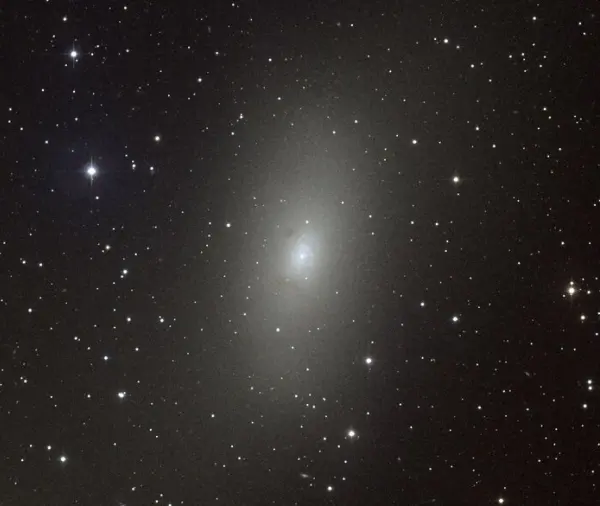Charles Messier’s Catalogue of Nebulae and Star Clusters (Catalogue des Nébuleuses et des Amas d’Étoiles) is an astronomical catalogue of 110 bright deep sky objects that may be mistaken for comets. Even though it was compiled for the purpose of helping observers distinguish between permanent and transient objects in the night sky, the Messier catalogue has become a popular guide for visual astronomy.
All Messier objects can be seen in small and medium telescopes. Some, like the Pleiades (M45), Praesepe (M44), and the Ptolemy Cluster (M7), are even visible to the unaided eye. All 110 objects are visible to observers in mid-northern latitudes.
The Messier catalogue was compiled by the French astronomer and comet hunter Charles Messier (1730 – 1817). Messier discovered many of the objects himself, in addition to 13 comets. He compiled the list with the help of his friend and assistant Pierre Méchain, who discovered 20 or more objects listed in the catalogue. Méchain’s discoveries include the Sunflower Galaxy (M63), the Little Dumbbell Nebula (M76), Cetus A (M77), the Owl Nebula (M97), and the Pinwheel Galaxy (M101).
Messier made his observations with a 4-inch refractor telescope from Hôtel de Cluny (now Musée de Cluny) in Paris, France. His catalogue only includes objects visible from Paris. The southernmost object on Messier’s list, the Ptolemy Cluster (Messier 7), has a declination of -34.50° and is visible to northern observers for at least part of the year.
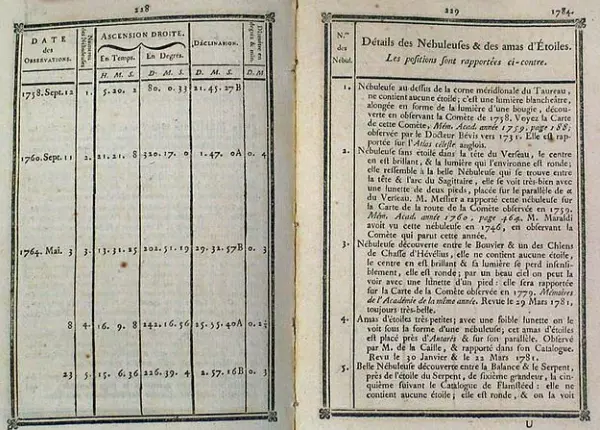
The Messier catalogue was first published in 1774 in the journal of the French Academy of Sciences in Paris. The first edition contained only 45 objects, 17 of which were Messier’s own discoveries. By 1780, the catalogue had been expanded to include 80 deep sky objects. The final version included a list of 103 objects. It was published in the annual publication Connaissance des temps for the year 1784.
The list was completed by other astronomers who used Messier’s side notes to add objects up to 110. Messier 104 was added by the French astronomer Nicolas Camille Flammarion in 1921. American-Canadian astronomer Helen Sawyer Fogg added the objects 105, 106 and 107 in 1947. Harvard astronomy professor Owen Gingerich added Messier 108 and 109 in 1960, and Messier 110 was included by the Welsh astronomer Kenneth Glyn Jones in 1967.
Messier objects
Messier’s catalogue includes a varied mix of astronomical objects, from planetary nebulae and H II regions to galaxies and star clusters. Unlike Caldwell objects, which are listed from the northernmost to the southernmost, Messier objects are mostly listed in the order of discovery. For this reason, amateur astronomers doing Messier marathons use a special list that allows them to hop between objects in the same area of the sky and see all 110 objects in a single night.
Below is the list of the 110 Messier objects (in the original order):
Messier 1: Crab Nebula (NGC 1952)
The Crab Nebula (M1) is a supernova remnant approximately 6,500 light years away in the constellation Taurus. It is the remnant of the historic supernova SN 1054, observed from July 4, 1054, to April 6, 1056. It appears near the blue giant star Tianguan (Zeta Tauri), which marks the northern horn of the Bull. The remnant has an apparent size of 7 by 5 arcminutes and a physical diameter of about 11 light years. With an apparent magnitude of 8.4, it is easily seen in small telescopes.
Right ascension: 05h 34m 31.9474694616s
Declination: +22° 00′ 52.153698024”
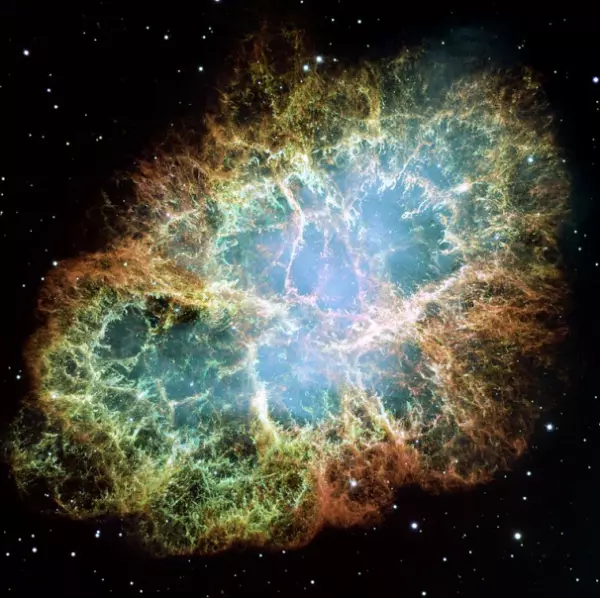
Messier 2: NGC 7089
NGC 7089 (M2) is a globular cluster 55,000 light years away in the constellation Aquarius. It has an apparent magnitude of 6.3 and is 16 arcminutes across. The cluster spans 175 light years and contains about 150,000 stars. It has an estimated age of 13 billion years. It is one of the globular clusters believed to be part of the Gaia Sausage (Gaia Enceladus), the hypothesized remains of a dwarf galaxy that was absorbed by the Milky Way 8 to 11 billion years ago.
Right ascension: 21h 33m 27.02s
Declination: -00° 49’ 23.7’’
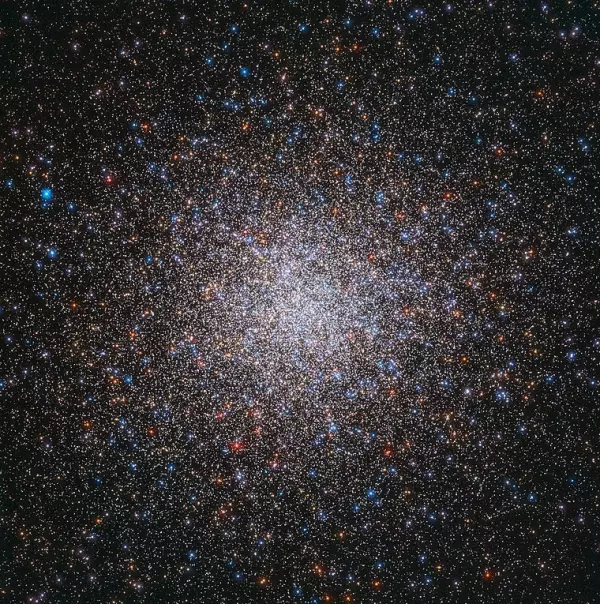
Messier 3: NGC 5272
NGC 5272 (M3) is a globular cluster 33,900 light years away in the constellation Canes Venatici. It appears almost exactly halfway between Arcturus and Cor Caroli. The cluster has an apparent magnitude of 6.2 and an apparent size of 18 arcminutes. It contains about 500,000 stars and has a physical radius of 90 light years. Its estimated age is about 11.39 billion years.
Right ascension: 13h 42m 11.62s
Declination: +28° 22’ 38.2’’
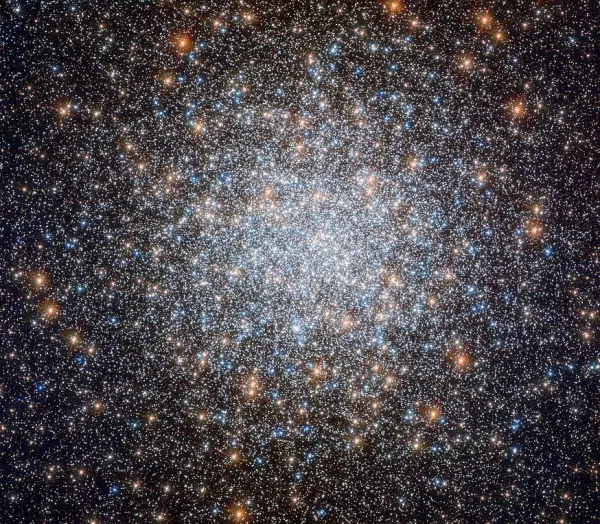
Messier 4: NGC 6121
NGC 6121 (M4) is a globular cluster 7,200 light years away in the constellation Scorpius. It appears only 1.3 degrees west of Antares. The cluster is about 75 light years across. With an apparent magnitude of 5.9 and an apparent size of 26 arcminutes, it is easily observed in small telescopes. It has an estimated age of 12.2 billion years.
Right ascension: 16h 23m 35.22s
Declination: -26° 31’ 32.7’’
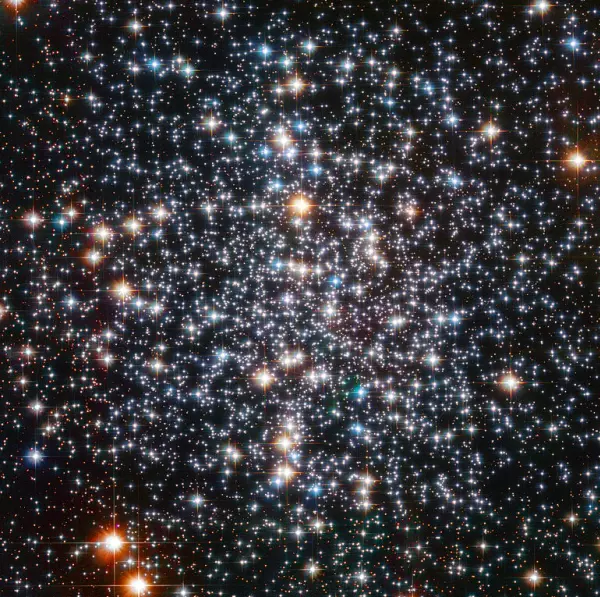
Messier 5: NGC 5904
NGC 5904 (M5) is a globular cluster 24,500 light years away in the constellation Serpens. It has an apparent magnitude of 5.95 and an apparent size of 23 arcminutes. It appears 22 arcminutes northwest of the magnitude 5.10 star 5 Serpentis. The cluster is 160 light years across. It has an estimated age of 10.62 billion years.
Right ascension: 15h 18m 33.22s
Declination: +02° 04’ 51.7’’
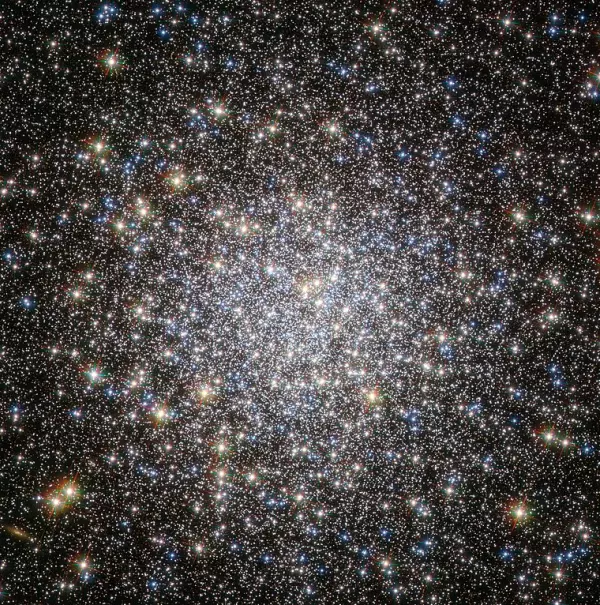
Messier 6: Butterfly Cluster (NGC 6405)
The Butterfly Cluster (M6) is a bright open cluster located 1,590 light years away in the constellation Scorpius. It has a radius of 12 light years. It appears 3.5 degrees northwest of the brighter and larger Messier 7, north of the Scorpion’s tail. Messier 6 has an apparent magnitude of 4.2 and an apparent size of 25 arcminutes. It is easily observed in binoculars. Its estimated age is 94.2 million years.
Right ascension: 17h 40m 16.6s
Declination: -32° 14’ 31’’
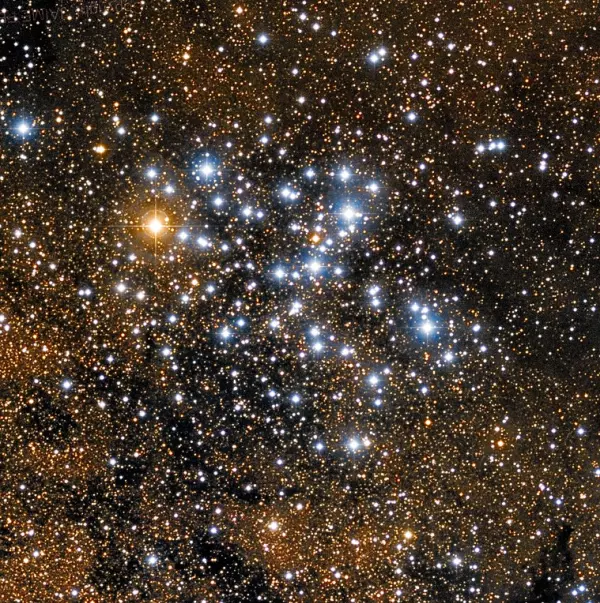
Messier 7: Ptolemy Cluster (NGC 6475)
The Ptolemy Cluster (M7) is an open cluster 980 light years away in Scorpius. With an apparent magnitude of 3.3 and an apparent size of 80 arcminutes, it is visible to the unaided eye. It lies near the Scorpion’s stinger, marked by the stars Shaula and Lesath (Lambda and Upsilon Scorpii). The cluster gets its name from the Greek-Roman astronomer Ptolemy, who was the first to record it in the 2nd century CE. It has a radius of 25 light years and its tidal radius spans 40.1 light years. The estimated age of M7 is 200 million years. Its brightest star shines at magnitude 5.6.
Right ascension: 17h 53m 47.3s
Declination: -34° 50’ 28’’
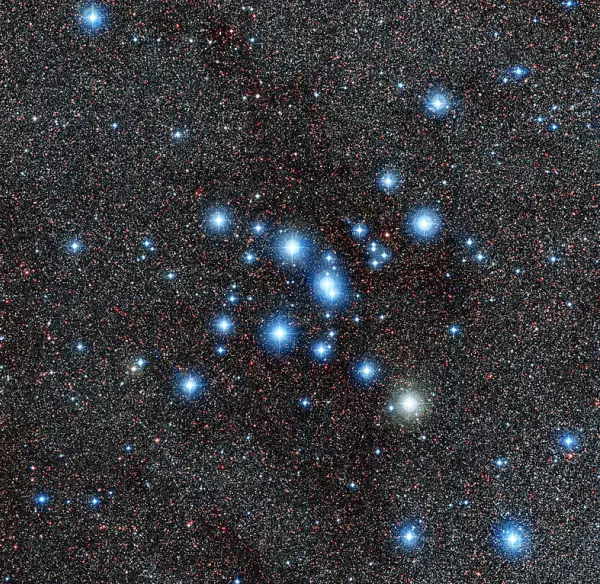
Messier 8: Lagoon Nebula (NGC 6523)
The Lagoon Nebula (M8) is a vast emission nebula and H II region located approximately 4,100 light years away in the constellation Sagittarius. It is associated with the open cluster NGC 6523 and also contains the open cluster NGC 6530. NGC 6530 is only 4 – 6 million years old. The Lagoon Nebula has an apparent size of 90 by 40 arcminutes and shines at magnitude 6.0. It spans 110 by 50 light years across. It appears in the same region of the sky as the Trifid Nebula (M20).
Right ascension: 18h 03m 37s
Declination: −24° 23′ 12″
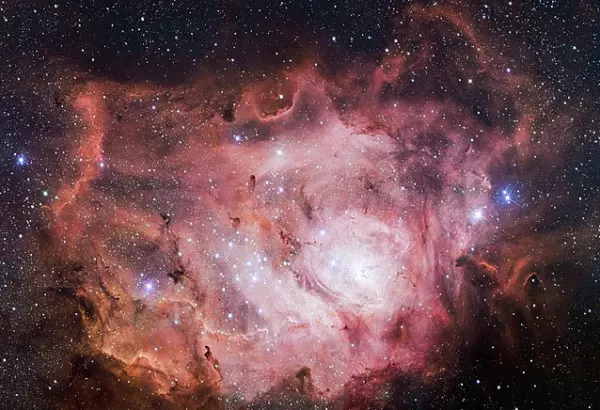
Messier 9: NGC 6333
NGC 6333 (M9) is a globular cluster 25,800 light years away in the constellation Ophiuchus. It has an apparent magnitude of 7.9 and an apparent size of 9.3 arcminutes. It appears next to a dark nebula catalogued as Barnard 64 and two fainter globular clusters, NGC 6356 and NGC 6342. The brightest stars in M9 can be observed in a small telescope. The cluster has a radius of 45 light years. Its estimated age is 12 billion years.
Right ascension: 17h 19m 11.78s
Declination: –18° 30′ 58.5″
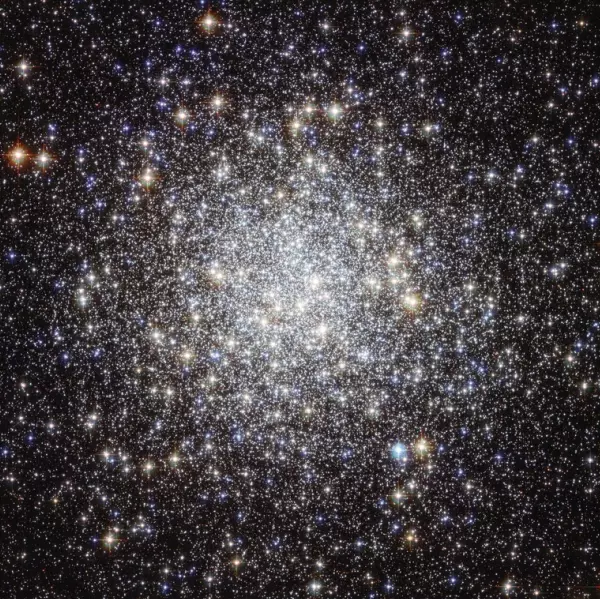
Messier 10: NGC 6254
NGC 6254 (M10) is a globular cluster 14,300 light years away in Ophiuchus. It appears a degree west of the class K giant 30 Ophiuchi, in the same region as the fainter globular cluster Messier 12. Messier 10 has an apparent magnitude of 6.4 and is visible in binoculars. It has a tidal radius of 19.3 arcminutes, but small and medium telescopes will reveal a cluster only 8 – 9 arcminutes across. The cluster has a physical diameter of 83 light years. Its estimated age is 11.39 billion years.
Right ascension: 16h 57m 8.92s
Declination: −04° 05′ 58.07″
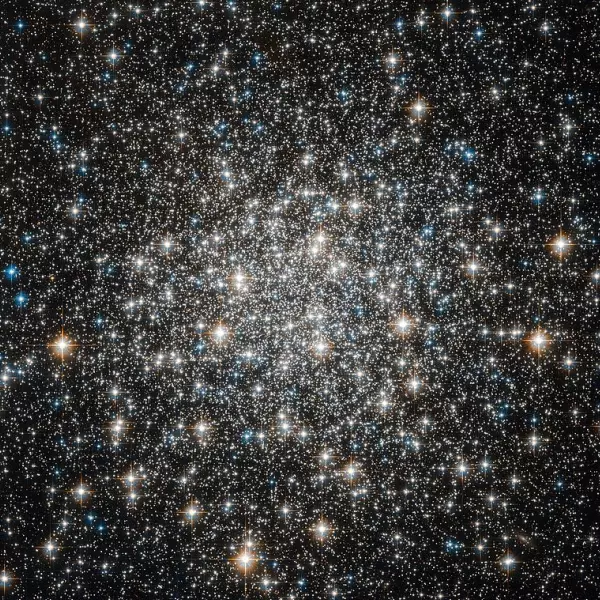
Messier 11: Wild Duck Cluster (NGC 6705)
The Wild Duck Cluster (M11) is an open cluster 6,120 light years away in the constellation Scutum, the Shield. It appears near the tail of the Eagle (Aquila). It was nicknamed the Wild Duck Cluster because it vaguely resembles a flying flock of ducks. The cluster has an apparent magnitude of 5.8 and is 22.8 arcminutes across. It has a tidal radius of 94 light years. The estimated age of the cluster is about 316 million years.
Right ascension: 18h 51m 03.8s
Declination: −06° 16′ 19″
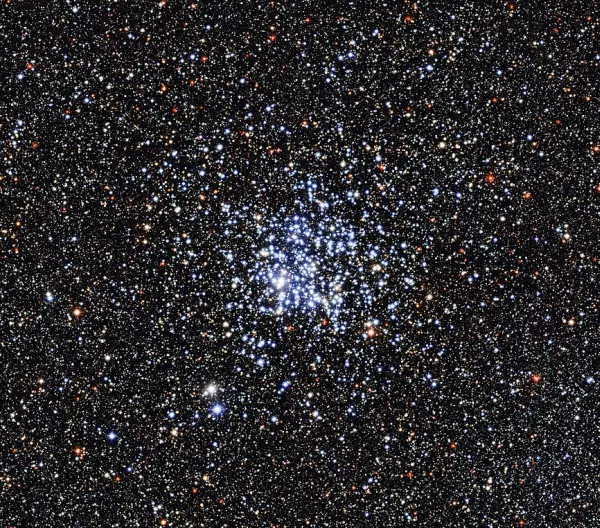
Messier 12: NGC 6218
NGC 6218 (M12) is a globular cluster in Ophiuchus. It lies 16,440 light years away and has an apparent magnitude of 7.68. It spans 16 arcseconds across, corresponding to a physical diameter of about 75 light years. M12 appears roughly two thirds of the way from Cebalrai (Beta Ophiuchi) to Yed Posterior (Epsilon Ophiuchi), 5.6 degrees east-southeast of Marfik (Lambda Ophiuchi). The brightest stars in the cluster can be resolved in 8-inch or larger telescopes. The estimated age of the cluster is about 13.8 billion years.
Right ascension: 16h 47m 14.18s
Declination: –01° 56′ 54.7″
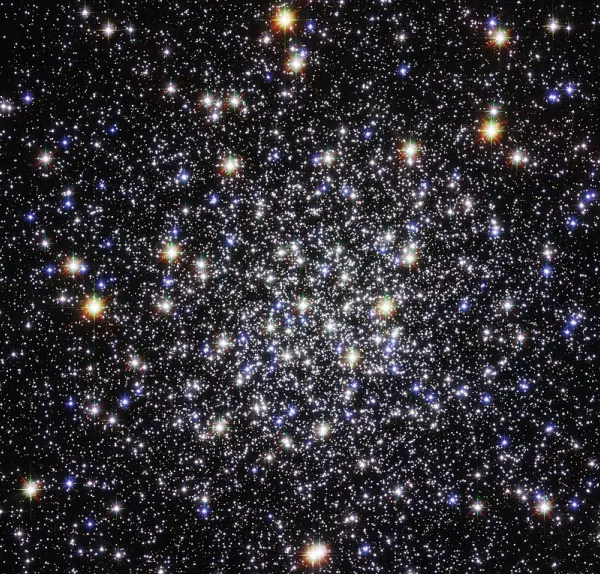
Messier 13: Hercules Globular Cluster (NGC 6205)
The Hercules Globular Cluster (M13) is a bright globular cluster in the region of the Keystone asterism in the constellation Hercules. It is one of the best-known globular clusters in the northern celestial hemisphere. M13 is about 145 light years across. It appears between the stars Eta and Zeta Herculis, or about a third of the way from Vega to Arcturus. The magnitude 11.7 spiral galaxy NGC 6207 appears in the same area. The Hercules Globular Cluster has an apparent magnitude of 5.8 and lies approximately 22,200 light years away. With an apparent size of 20 arcminutes, it makes a fine target for small telescopes. The estimated age of the cluster is 11.65 billion years.
Right ascension: 16h 41m 41.24s
Declination: +36° 27′ 35.5″
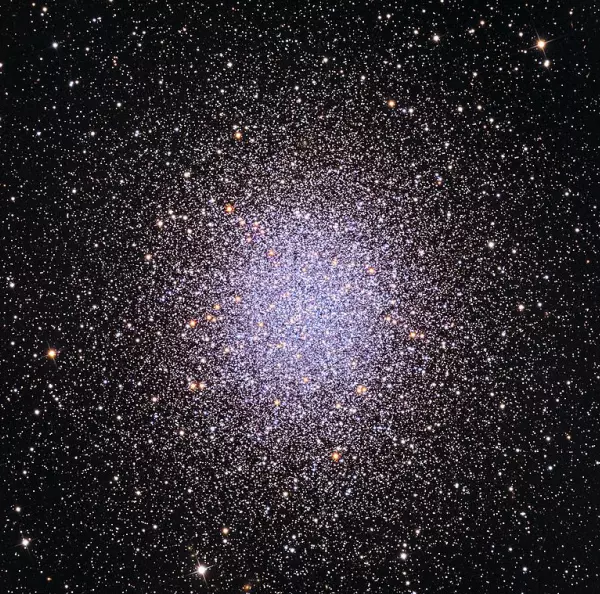
Messier 14: NGC 6402
NGC 6402 (M14) is a globular cluster 30,300 light years away in Ophiuchus constellation. It has an apparent magnitude of 8.32 and stretches across 11 arcminutes of the apparent sky. It has a linear diameter of about 100 light-years. A fainter globular cluster, NGC 6366, lies just over 3 degrees southwest of M14.
Right ascension: 17h 37m 36.15s
Declination: –03° 14′ 45.3″
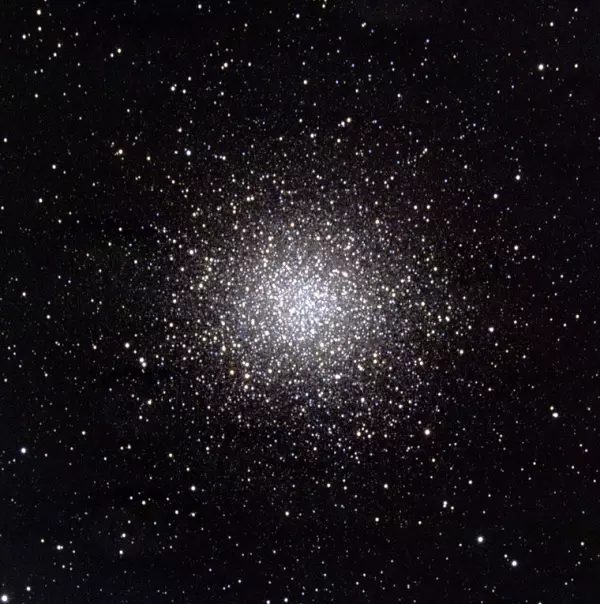
Messier 15: Great Pegasus Cluster (NGC 7078)
The Great Pegasus Cluster (M15) is a globular cluster approximately 35,690 light years away in the constellation Pegasus. It appears between Enif, the brightest star in Pegasus, and the main constellation figure of Delphinus. It lies 4.2 degrees west-northwest of Enif. With an apparent magnitude of 6.2 and an apparent size of 18 arcminutes, the cluster can be seen in binoculars. Six-inch and larger telescopes resolve the cluster’s brightest stars. M15 is about 175 light years across. It has an estimated age of 12.5 billion years.
Right ascension: 21h 29m 58.33s
Declination: +12° 10′ 01.2″
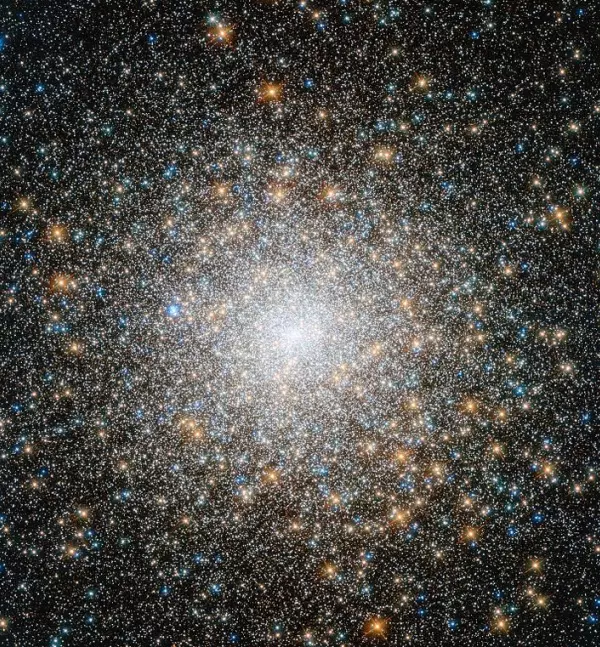
Messier 16: Eagle Nebula (NGC 6611)
The Eagle Nebula (M16) is an open cluster associated with an emission nebula approximately 5,700 light years away in the constellation Serpens. The nebula is also known as the Star Queen Nebula or the Spire. M16 has an apparent magnitude of 6.0. It is part of a larger diffuse nebula catalogued as IC 4703, which is 55 by 70 light years across. The star cluster NGC 6611 contains about 8,100 stars. It has an estimated age of only 1 – 2 million years. The Eagle Nebula contains the Pillars of Creation, a star-forming region with trunks of interstellar dust and gas famously photographed by the Hubble Space Telescope in 1995.
Right ascension: 18h 18m 45.1s
Declination: −13° 47′ 31’’
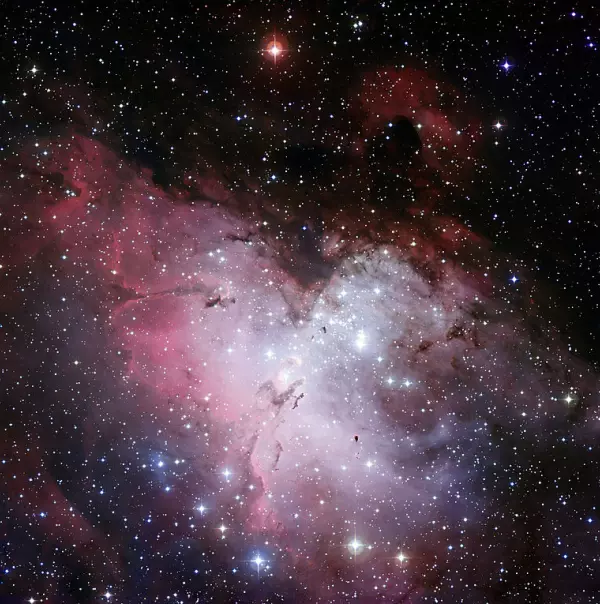
Messier 17: Omega Nebula (NGC 6618)
The Omega Nebula (M17) is a large star-forming region located north of the Teapot asterism in the constellation Sagittarius. It lies 5,000 – 6,000 light years away and has an apparent magnitude of 6.0. It is one of the brightest and most massive H II regions in the Milky Way. The nebula is associated with the open cluster NGC 6618. The cluster is one of the youngest ones known, with an estimated age of just 1 million years. M17 is also known as the Swan Nebula, Lobster Nebula, Checkmark Nebula, and Horseshoe Nebula.
Right ascension: 18h 20m 47.0s
Declination: −16° 10′ 18″
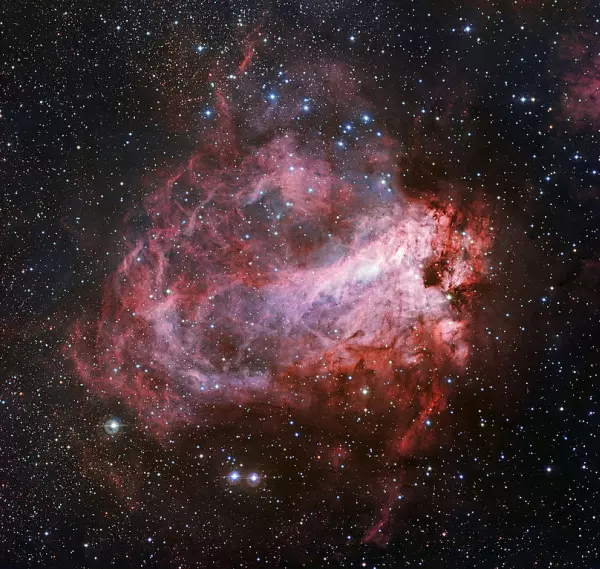
Messier 18: NGC 6613
NGC 6613 (M18) is an open star cluster appearing south of the Omega Nebula (M17) and north of the Small Sagittarius Star Cloud (M24) in Sagittarius. The cluster lies 4,230 light years away. It has an apparent magnitude of 7.5 and an apparent size of 9.8 arcminutes. Its estimated age is 33 million years.
Right ascension: 18h 19m 57.4s
Declination: –17° 05′ 20″
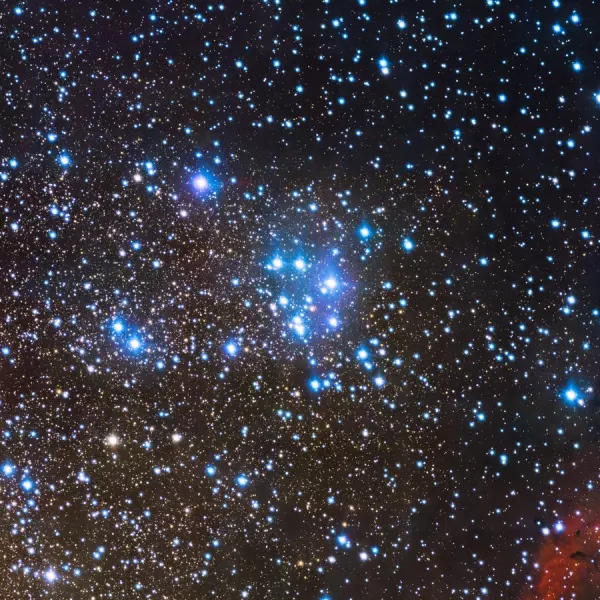
Messier 19: NGC 6273
NGC 6273 (M19) is a globular cluster about 28,700 light years away in Ophiuchus constellation. It appears 4.5 degrees west-southwest of Theta Ophiuchi. It has an apparent size of 17 arcminutes and an apparent magnitude of 7.47. Its estimated age is 11.90 billion years. The cluster lies only 6,500 light years from the Galactic Centre.
Right ascension: 17h 02m 37.69s
Declination: −26° 16′ 04.6″
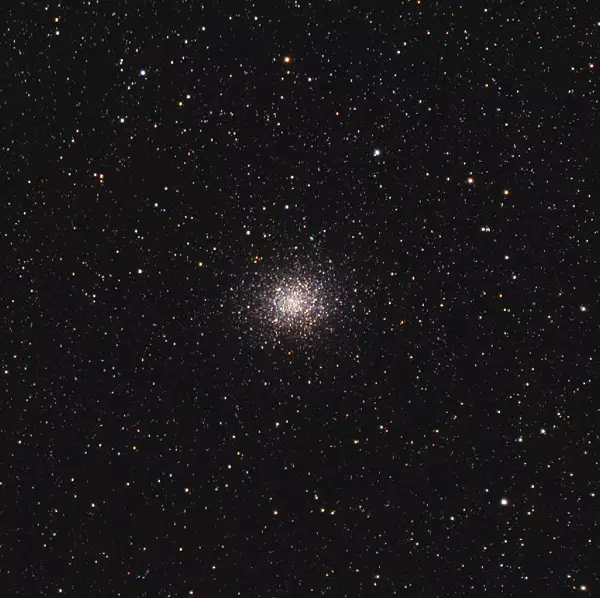
Messier 20: Trifid Nebula (NGC 6514)
The Trifid Nebula (M20) is an H II region about 4,100 light years away in Sagittarius. With an apparent magnitude of 6.3 and an apparent size of 28 arcminutes, it makes a good target for small telescopes. M20 consists of an emission nebula, a reflection nebula, a dark nebula, and an open star cluster. It has a radius of 21 light years.
Right ascension: 18h 02m 42.0s
Declination: −22° 58′ 18″
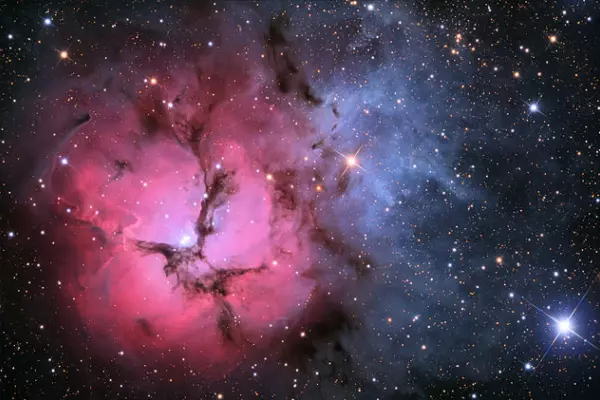
Messier 21: NGC 6531
NGC 6531 (M21) is a bright open cluster near the Trifid Nebula (M20), north of the Lagoon Nebula (M8) in Sagittarius. The cluster lies 3,930 light years away. With an apparent magnitude of 6.5 and an apparent size of 14 arcminutes, it is easily observed in binoculars and small telescopes. M21 is sometimes known as Webb’s Cross. It has an estimated age of 6.6 million years.
Right ascension: 18h 04m 08.6s
Declination: −22° 30′ 18″
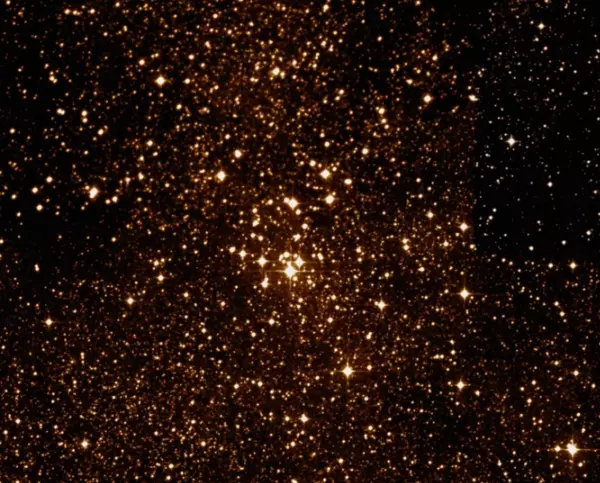
Messier 22: Sagittarius Cluster (NGC 6656)
The Sagittarius Cluster (M22) is a globular cluster approximately 10,600 light years away in Sagittarius. It appears northwest of Kaus Borealis (Lambda Sagittarii), the northernmost star of the Archer’s Bow. The cluster has an apparent magnitude of 5.1 and is 32 arcminutes across. It has a linear diameter of about 99 light years. Its brightest stars can be resolved in 8-inch telescopes. M22 has an estimated age of 12 billion years.
Right ascension: 18h 36m 23.94s
Declination: –23° 54′ 17.1″
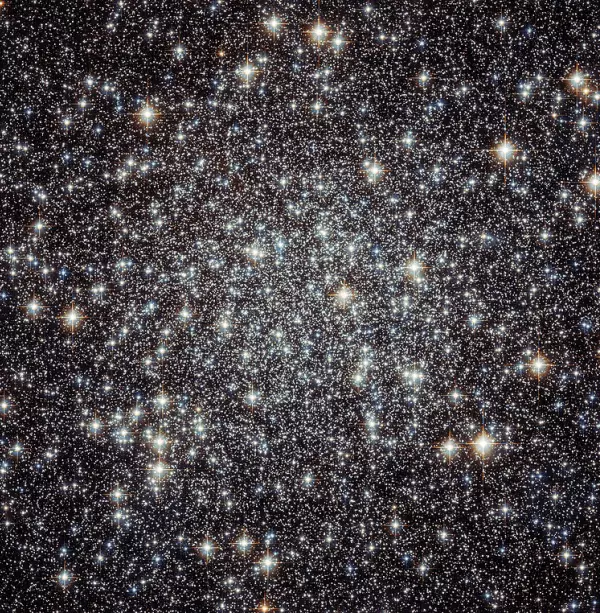
Messier 23: NGC 6494
NGC 6494 (M23) is an open cluster 2,050 light years away in Sagittarius. With an apparent magnitude of 5.5 and an apparent size of 35 arcminutes, it can be seen in binoculars and small telescopes. It has a radius of 8 light years. The estimated age of the cluster is about 330 million years.
Right ascension: 17h 56m 56.9s
Declination: −18° 59′ 13″
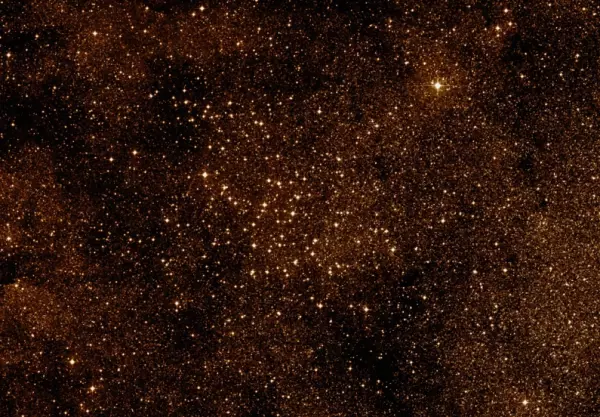
Messier 24: Small Sagittarius Star Cloud (IC 4715)
The Small Sagittarius Star Cloud (M24) is a Milky Way star cloud about 10,000 light years away in Sagittarius. It is the densest concentration of stars that can be seen in binoculars. About a thousand stars populate a single field of view. M24 has a radius of about 600 light years. It is one of three Messier objects that are not deep sky objects. Several dark nebulae are found in the same area. They are catalogued as Barnard 92, Barnard 93, Barnard 304, and Barnard 307.
Right ascension: 18h 16m 48.0s
Declination: −18° 33′ 00′′
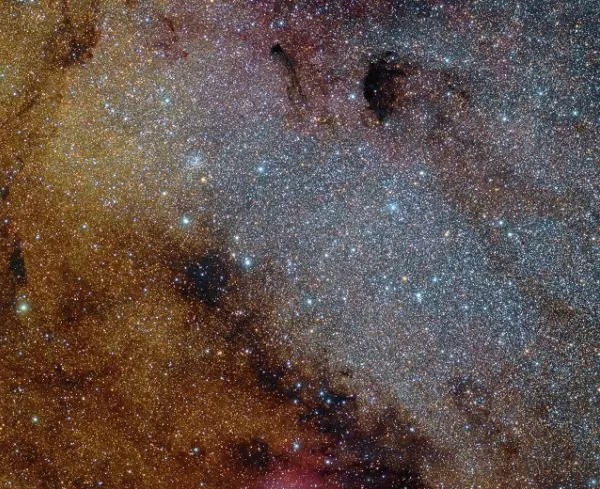
Messier 25: IC 4725
IC 4725 (M25) is an open cluster approximately 2,000 light years away in Sagittarius. It has an apparent magnitude of 4.9 and an apparent size of 36 arcminutes. It is about 13 light years across. Its estimated age is 67.6 million years.
Right ascension: 18h 31m 44.9s
Declination: −19° 06′ 50″
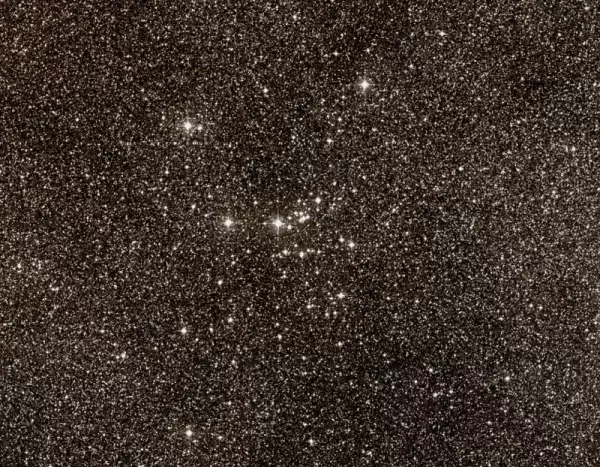
Messier 26: NGC 6694
NGC 6694 (M26) is an open star cluster that appears southwest of the Wild Duck Cluster (M11), near the famous variable star Delta Scuti in the constellation Scutum. The cluster lies 5,160 light years away and has an apparent magnitude of 8.0. It is 14 arcminutes across and has a linear diameter of 22 light years, with a tidal radius of 25 light years. It has an estimated age of 85.3 million years.
Right ascension: 18h 45m 16.1s
Declination: −09° 23′ 10″
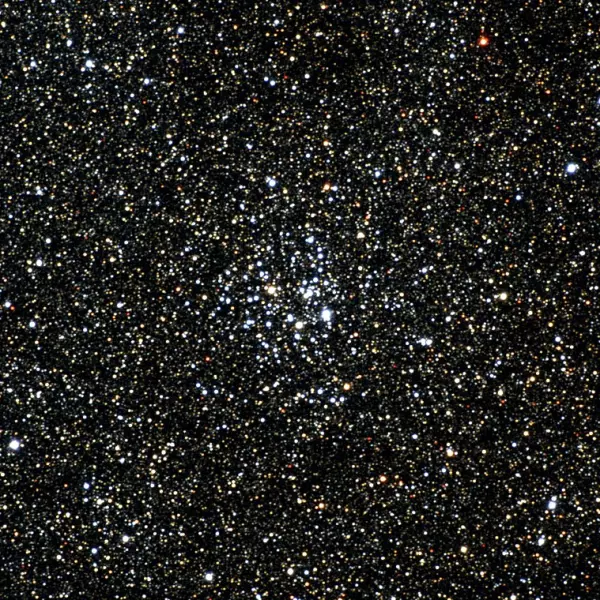
Messier 27: Dumbbell Nebula (NGC 6853)
The Dumbbell Nebula (M27) is a planetary nebula approximately 1,360 light years away in the constellation Vulpecula. With an apparent magnitude of 7.5, it is one of the brightest planetary nebulae in the sky. It has an apparent size of 8 by 5.6 arcminutes and a linear radius of about 1.44 light years. The nebula appears 3 degrees north of Gamma Sagittae, the star at the tip of the celestial Arrow, along the imaginary line from Albireo (Beta Cygni) in Cygnus to Sualocin (Alpha Delphini) in Delphinus. The nebula’s central star is one of the largest white dwarfs discovered to date.
Right ascension: 19h 59m 36.3631850088s
Declination: +22° 43′ 16.312059552″
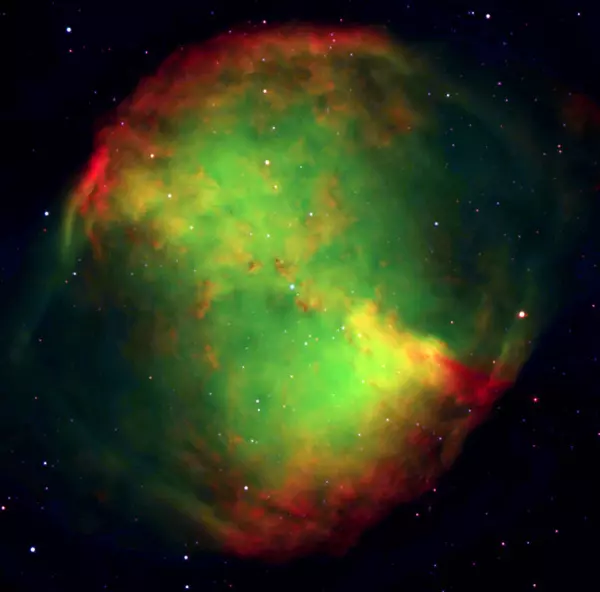
Messier 28: NGC 6626
NGC 6626 (M28) is a globular cluster appearing less than a degree northwest of Kaus Borealis (Lambda Sagittarii) in the constellation Sagittarius. With an apparent magnitude of 7.66 and an apparent size of 11.2 arcminutes, the cluster can be observed in small telescopes. Its brightest stars can be resolved in 6-inch and larger telescopes. The cluster lies approximately 18,260 light years away. It has an estimated age of 12 billion years.
Right ascension: 18h 24m 32.89s
Declination: –24° 52′ 11.4″
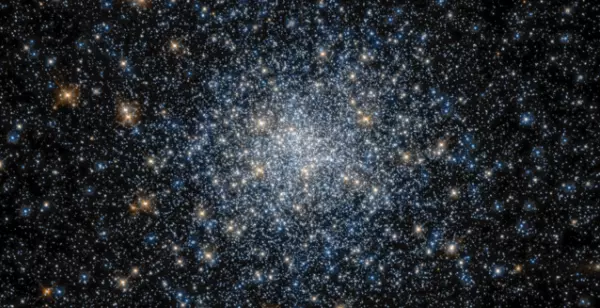
observations made with the NASA/ESA Hubble Space Telescope, and obtained from the Hubble Legacy Archive, which is a collaboration between the Space Telescope Science Institute (STScI/NASA), the Space Telescope European Coordinating Facility (ST-ECF/ESA) and the Canadian Astronomy Data Centre (CADC/NRC/CSA). (CC BY-SA 3.0)
Messier 29: Cooling Tower (NGC 6913)
NGC 6913 (M29) is a small open cluster about 3,740 light years away in the constellation Cygnus. It appears about 1.7 degrees south of Sadr (Gamma Cygni), the star at the centre of the Northern Cross. It has an apparent size of 7 arcminutes and an apparent magnitude of 6.6. M29 is only 11 light years across. It is sometimes called the Cooling Tower because its brightest stars form a pattern similar to that of a hyperboloid. The estimated age of the cluster is 13.2 million years.
Right ascension: 20h 23m 46.3s
Declination: +38° 29′ 13″
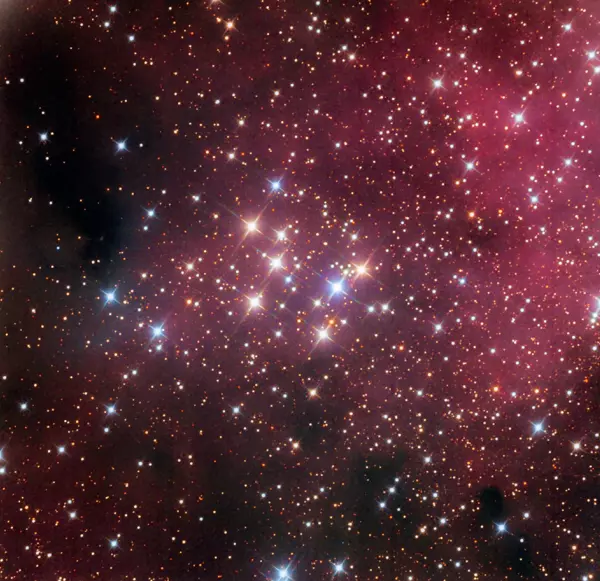
Messier 30: NGC 7099
NGC 7099 (M30) is a globular cluster about 27,140 light years away in the constellation Capricornus. It has an apparent magnitude of 7.7 and an apparent size of 12 arcminutes. Its estimated age is 12.93 billion years.
Right ascension: 21h 40m 22.12s
Declination: –23° 10′ 47.5″
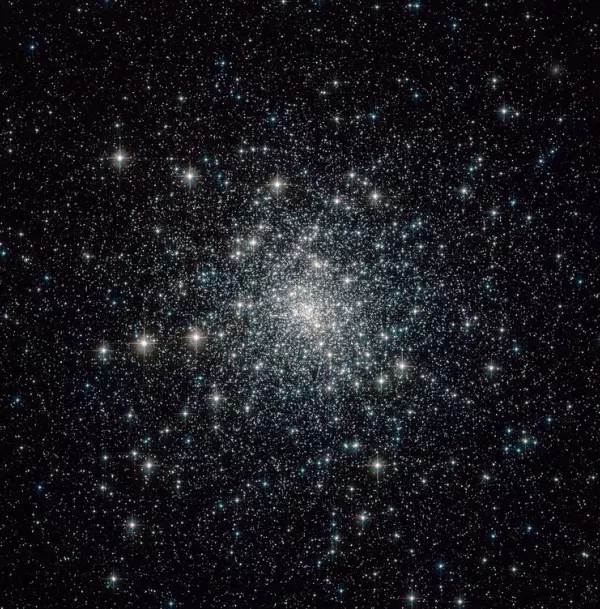
Messier 31: Andromeda Galaxy (NGC 224)
The Andromeda Galaxy (M31) is a barred spiral galaxy only 2.5 million light years away in the constellation Andromeda. It is the closest large galaxy to the Milky Way. It has an apparent magnitude of 3.44 and is visible to the unaided eye on a clear, dark night. Andromeda is one of the brightest Messier objects. It occupies an area of 3.167 by 1 degrees of the sky. It is about 220,000 light years across and contains a trillion stars, about twice the number of stars in our galaxy. The Milky Way and Andromeda are expected to collide in about 4 to 5 billion years and ultimately merge to form a giant elliptical or large lenticular galaxy.
Right ascension: 00h 42m 44.3s
Declination: +41° 16′ 9″
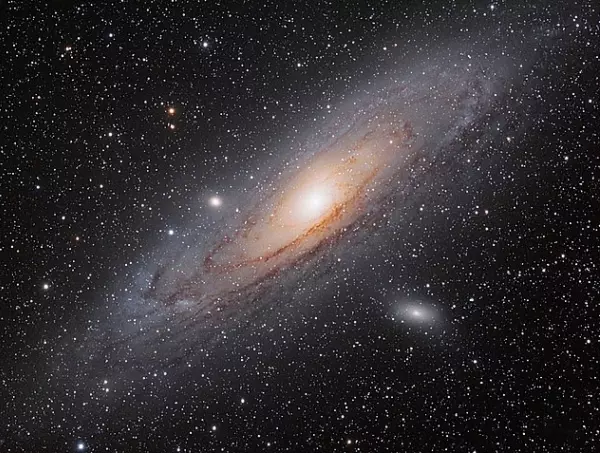
Messier 32: NGC 221
NGC 221 (M32) is a dwarf galaxy about 2.49 million light years away in the Andromeda constellation. It is a satellite galaxy to the larger Andromeda (M31) and appears in the same field of view. The galaxy has an apparent magnitude of 8.08 and an apparent size of 8.7 by 6.5 arcminutes.
Right ascension: 00h 42m 41.825s
Declination: +40° 51′ 54.61″
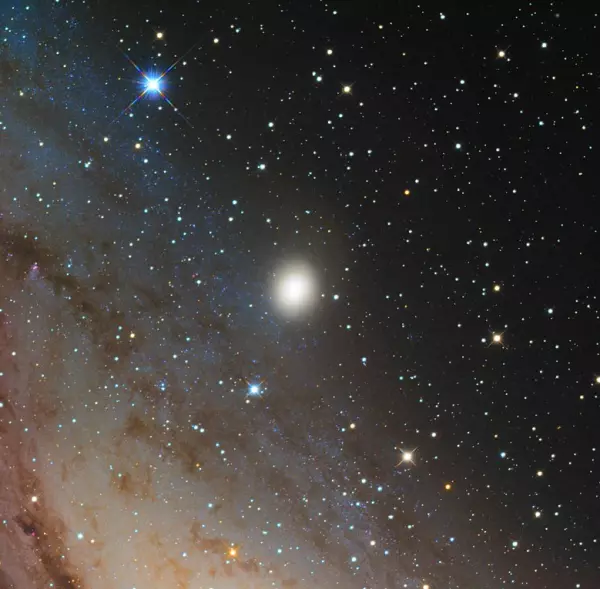
Messier 33: Triangulum Galaxy (NGC 598)
The Triangulum Galaxy (M33) is a spiral galaxy about 2.73 million light years away in the constellation Triangulum. Like M31, it gets its name from its host constellation. M33 is the third largest member of the Local Group, being slightly smaller only than Andromeda and the Milky Way. Like Andromeda, it is one of the most distant objects visible to the unaided eye. The galaxy has an apparent magnitude of 5.72 and an apparent size of 70.8 by 41.7 arcminutes. It contains about 40 billion stars and has a linear diameter of about 60,000 light years.
Right ascension: 01h 33m 50.8965749232s
Declination: +30° 39′ 36.630403128″
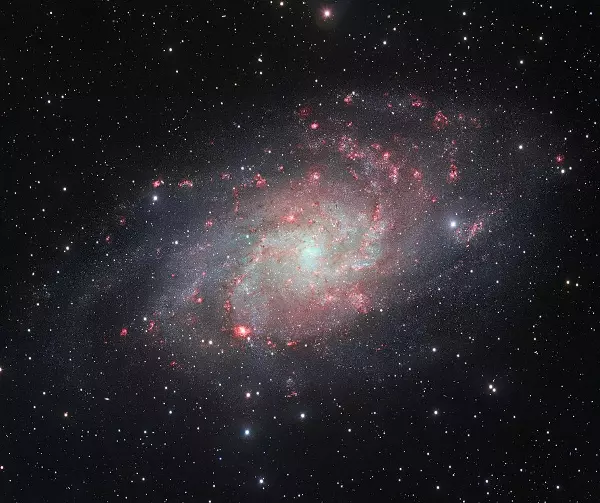
Messier 34: NGC 1039
NGC 1039 (M34) is a large open cluster approximately 1,500 light years away in the constellation Perseus. It appears just north of the imaginary line connecting Algol in Perseus and Almach in Andromeda. The cluster has an apparent magnitude of 5.5 and is 35 arcminutes across. It has a linear radius of about 7.5 light years. M34 is easily observed in binoculars and small telescopes. It has an estimated age of about 250 million years.
Right ascension: 02h 42m 07.4s
Declination: +42° 43′ 19′′
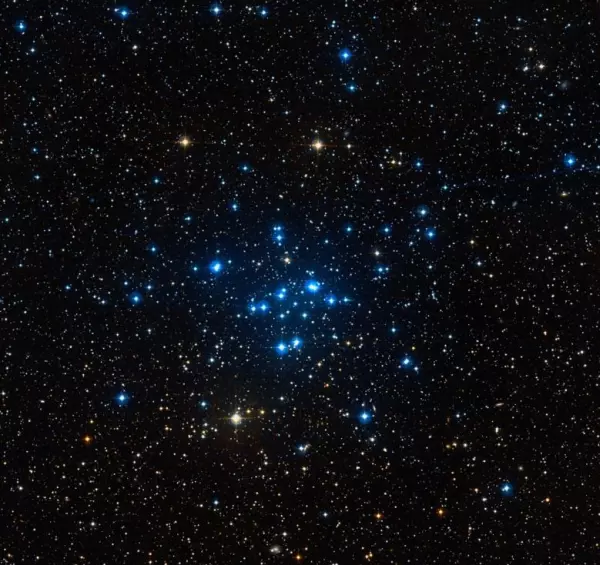
Messier 35: NGC 2168
NGC 2168 (M35) is a bright, large open star cluster in the constellation Gemini. With an apparent magnitude of 5.1 and an apparent size of 28 arcminutes, it is easily spotted in binoculars. It has a linear radius of 11 light years. The cluster appears near Propus (Eta Geminorum), in the direction of Elnath (Beta Tauri). Another relatively bright open cluster (mag. 8.6), catalogued as NGC 2158, lies to the southwest. The two clusters are unrelated as they lie at different distances. M35 is 3,870 light years away and NGC 2158 at least 11,000 light years away.
Right ascension: 06h 09m 05.3s
Declination: +24° 20′ 10″
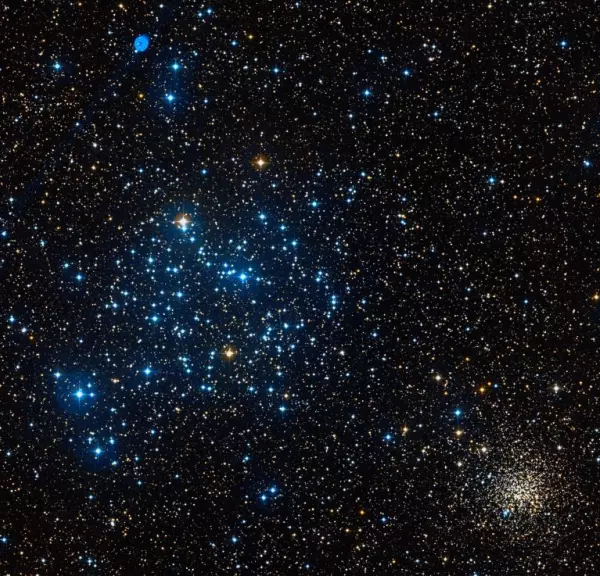
Messier 36: NGC 1960
NGC 1960 (M36) is an open cluster 4,340 light years away in the constellation Auriga. It has an angular size of 10 arcminutes, with a core radius of 3.2 arcminutes. With an apparent magnitude of 6.3, M36 can be seen in binoculars. It has a linear radius of 7 light years. The estimated age of the cluster is 25.1 million years.
Right ascension: 05h 36m 20.2s
Declination: +34° 08′ 06″
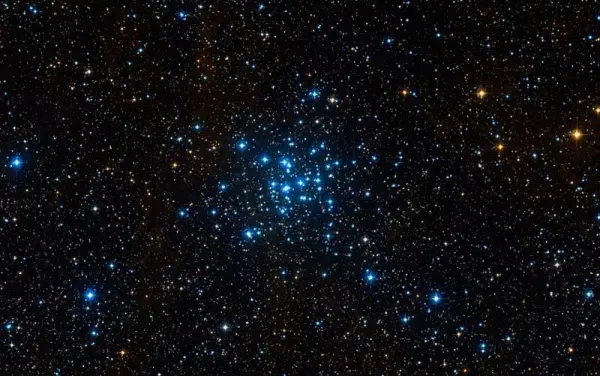
Messier 37: NGC 2099
NGC 2099 (M37) appears in the same region of the sky as M36. It is the brightest open cluster in Auriga, with an apparent magnitude of 6.2. It appears 24 arcminutes across, which corresponds to a linear diameter of 20 – 25 light years. M37 is older than M36, with an estimated age between 346.7 and 550 million years. It lies 4,511 light years away. It appears roughly halfway between Mahasim (Theta Aurigae) and Hassaleh (Iota Aurigae).
Right ascension: 5h 52m 17.8s
Declination: +32° 32′ 42″
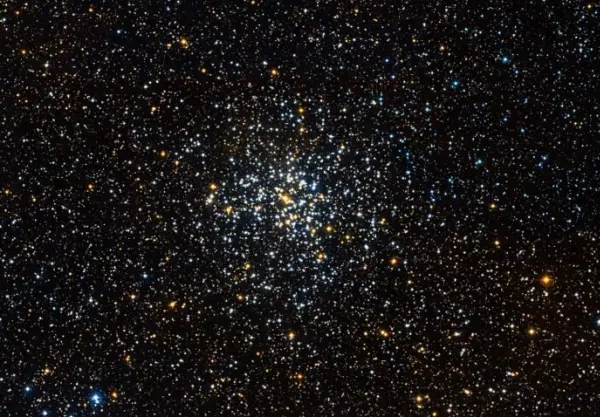
Messier 38: Starfish Cluster (NGC 1912)
The Starfish Cluster (M38) is the third open cluster in Auriga catalogued by Charles Messier. It has an apparent magnitude of 7.4 and lies 3,480 light years away. It appears east of the imaginary line connecting Mahasim (Theta Aurigae) and Elnath (Beta Tauri). The cluster has an apparent size of 21 arcminutes. Its estimated age is about 250 million years.
Right ascension: 05h 28m 40.1s
Declination: +35° 49′ 26″
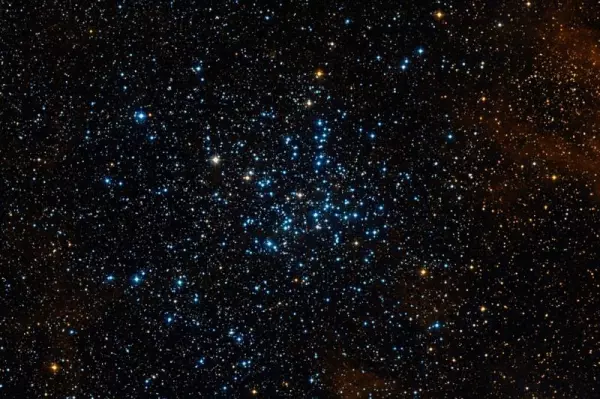
Messier 39: NGC 7092
NGC 7092 (M39) is an open cluster approximately 1,010 light years away in the constellation Cygnus. It appears two degrees south of the magnitude 4.24 blue giant Pi2 Cygni. The cluster is best seen in binoculars. It has an apparent magnitude of 5.5 and is 29 arcminutes across. Its estimated age is about 278.6 million years.
Right ascension: 21h 31m 33.4s
Declination: +48° 14′ 49″
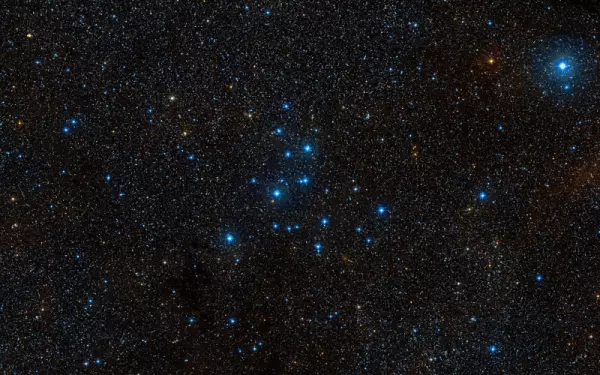
Messier 40: Winnecke 4
Winnecke 4 (M40) is a visual double star located in the constellation Ursa Major. It is one of the objects that Charles Messier catalogued by mistake. He found it while searching for a nebula. German astronomer Friedrich August Theodor Winnecke discovered the two stars independently a century later and included the pair in his catalogue of double stars as Winnecke 4. The two stars of M40 are not physically related, but merely lie in the same line of sight. Catalogued as HD 238107 and HD 238108, the stars have apparent magnitudes of 9.64 and 10.11 and lie 1,140 and 460 light years away. One is a class K giant and the other, a Sun-like yellow dwarf. The stars appear near Megrez (Delta Ursae Majoris), one of the inner stars of the Big Dipper’s bowl.
Right ascension: 12h 22m 12.0s
Declination: +58° 05′ 00″
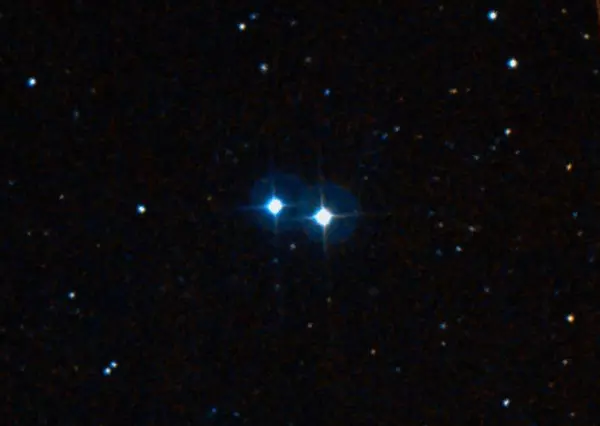
Messier 41: NGC 2287
NGC 2287 (M41) is an open cluster appearing about 4 degrees south of Sirius in the constellation Canis Major. The cluster is 38 arcminutes across and has an apparent magnitude of 4.5. It has a linear diameter of 25 – 26 light years and lies 2,300 light years away. Its estimated age is 190 million years.
Right ascension: 06h 45m 59.8s
Declination: −20° 42′ 58′′
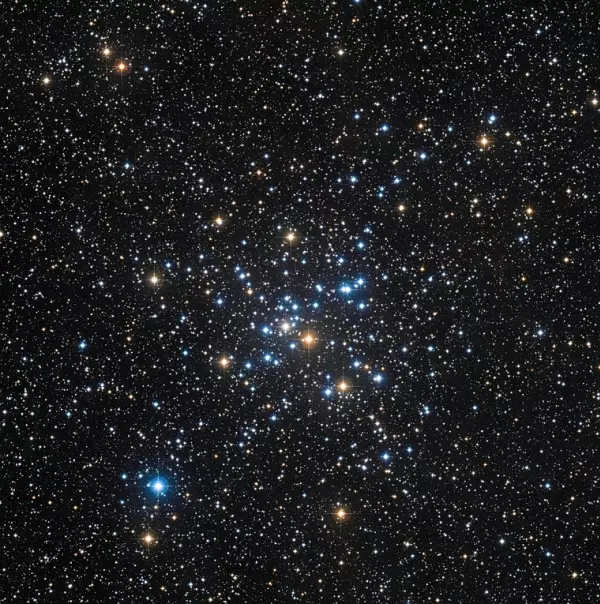
Messier 42: Orion Nebula (NGC 1976)
The Orion Nebula (M42) is a large reflection/emission nebula about 1,344 light years away in the constellation Orion. It is the nearest region of massive star formation to the Sun. It appears as the central point of light in Orion’s Sword. With an apparent magnitude of 4.0, the nebula is easily visible without binoculars. It is 65 by 60 arcminutes across, which corresponds to a physical diameter of 24 light years. The nebula is home to a very young star cluster nicknamed the Trapezium Cluster because its four brightest stars form a trapezium-shaped asterism. The asterism can be resolved in 6-inch telescopes. The Orion Nebula is part of the Orion Molecular Cloud Complex, a vast star-forming region hundreds of light-years across.
Right ascension: 05h 35m 17.3s
Declination: −05° 23′ 28″
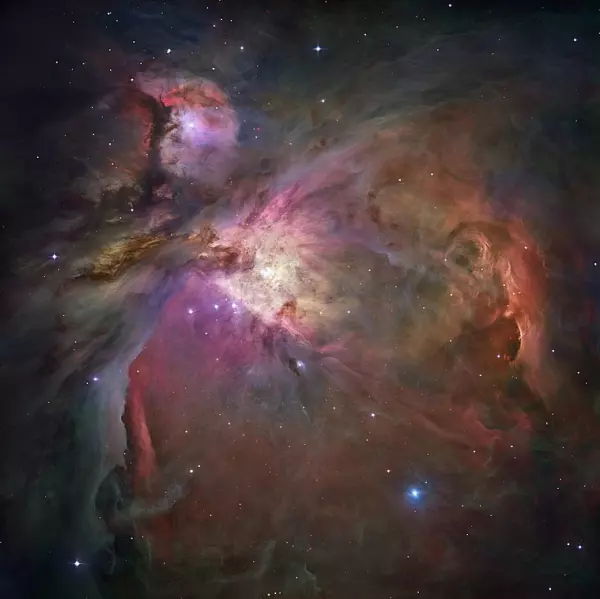
Messier 43: De Mairan’s Nebula (NGC 1982)
De Mairan’s Nebula (M43) is a star-forming nebula about 1,300 light years away in Orion. It is part of the larger Orion Nebula (M42), but separated by a dark dust lane from the main nebula. It is ionized mainly by the hot blue B-type star HD 37061 (NU Orionis). M43 is 20 by 15 arcminutes across and has an apparent magnitude of 9.0. It was named after the French astronomer Jean-Jacques d’Ortous de Mairan, who discovered it before 1731.
Right ascension: 05h 35m 31.8s
Declination: −05° 17′ 57″
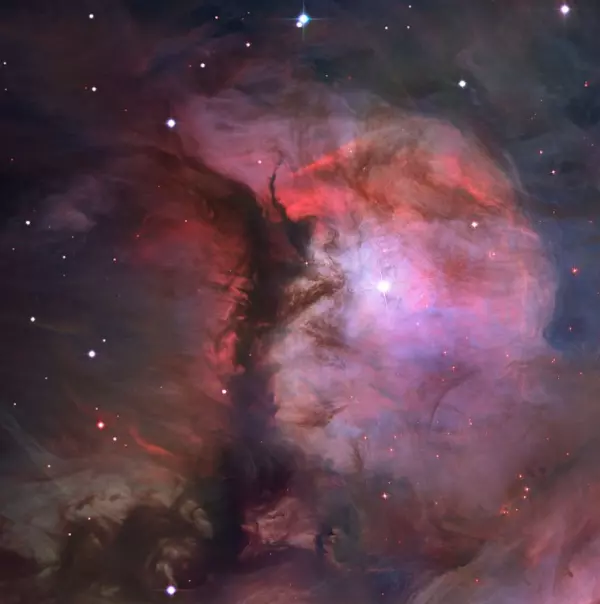
Messier 44: Beehive Cluster (Praesepe, NGC 2632)
The Beehive Cluster (M44) is a bright, large open cluster approximately 610 light years away in the constellation Cancer. It is one of the brightest and nearest open clusters to the Sun. M44 has an apparent magnitude of 3.7 and an apparent size of 95 arcminutes. It is visible to the unaided eye and best observed in binoculars or small telescopes at low power. The cluster has an estimated age of 600 – 700 million years. It has been known since ancient times. Its other name, Praesepe, means “manger” in Latin. The cluster was associated with a manger by ancient Greeks and Romans. Two nearby stars, Asellus Borealis and Asellus Australis, represented donkeys eating from the manger.
Right ascension: 08h 40m 13.0s
Declination: 19° 37′ 16′′
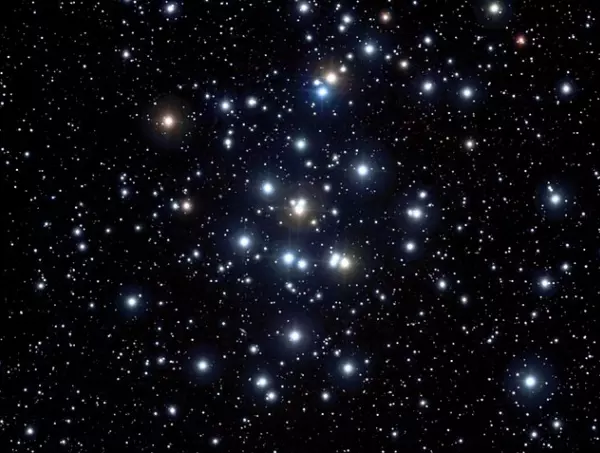
Messier 45: Pleiades
The Pleiades cluster (M45) is an open cluster approximately 444 light years away in the constellation Taurus. It is the closest Messier object to the Sun. With an apparent magnitude of 1.6 and an apparent size of 110 arcminutes, it is the easiest open cluster to spot with the unaided eye. It has a core radius of about 8 light years and a tidal radius of 43 light years. The nine brightest stars in the cluster were named after the Pleiades (Seven Sisters) in Greek mythology. These are mostly hot, luminous blue stars less than 100 million years old. The cluster has been known since prehistoric times. The earliest depiction dates to the Bronze Age (1600 BC).
Right ascension: 03h 46m 24.2s
Declination: +24° 06′ 50″
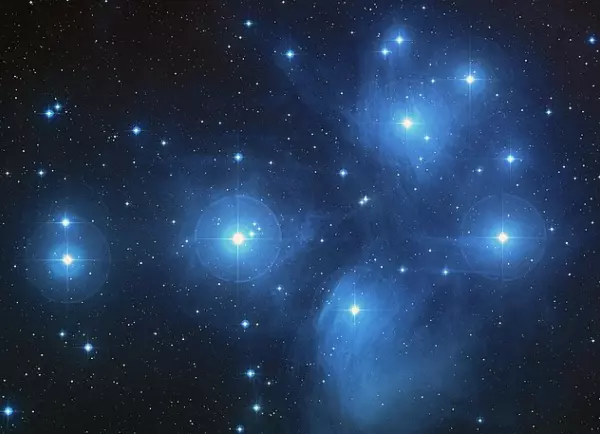
Messier 46: NGC 2437
NGC 2437 (M46) is an open cluster approximately 4,920 light years away in the constellation Puppis. It contains about 500 stars and has an estimated age of 251.2 million years. The cluster is visible in binoculars. It has an apparent magnitude of 6.1 and an apparent size of 22.8 arcminutes. It appears only a degree east of the open cluster M47. Both clusters are found along the imaginary line connecting Sirius in Canis Major and Alphard in Hydra.
Right ascension: 07h 41m 46.8s
Declination: −14° 50′ 38″
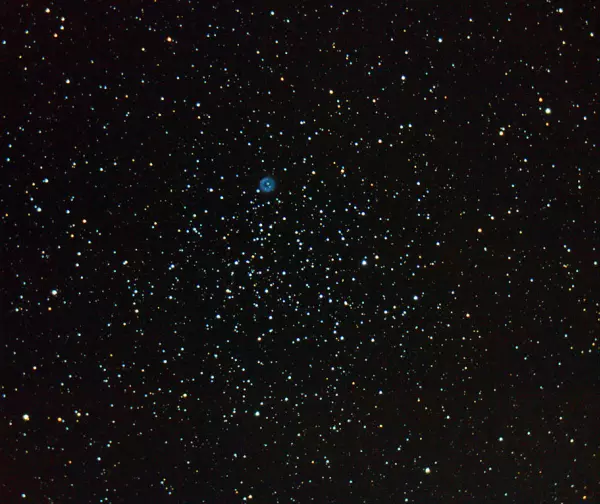
Messier 47: NGC 2422
NGC 2422 (M47) is an open cluster about 1,624 light years away in Puppis. It contains about 500 stars. With an apparent magnitude of 4.2 and an apparent size of 30 arcminutes, the cluster is visible without binoculars on a clear, dark night. It has an estimated age of 78 million years.
Right ascension: 07h 36m 35.3s
Declination: −14° 29′ 20′′
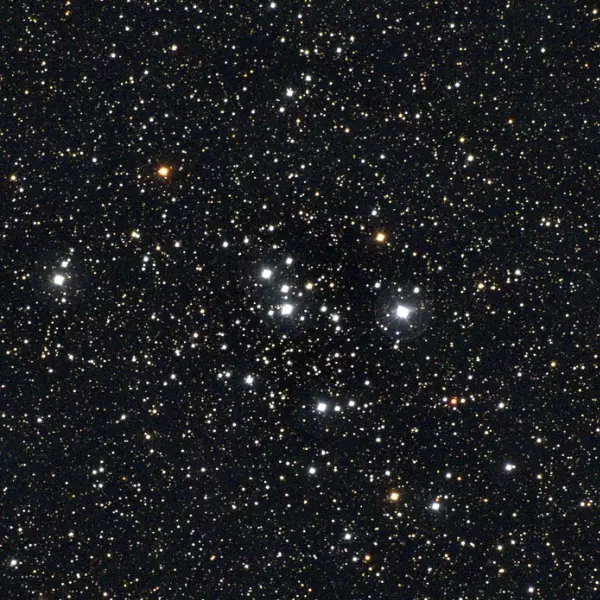
Messier 48: NGC 2548
NGC 2548 (M48) is an open cluster located in the constellation Hydra. It has an apparent magnitude of 5.8 and an apparent size of 30 arcminutes. It lies on the imaginary line between Sirius in Canis Major and Regulus in Leo, about 18° 34’ east-southeast of Alphard, the brightest star in Hydra. The cluster has a tidal radius of about 63.3 light years and contains at least 438 stars. Its estimated age is about 450 million years.
Right ascension: 08h 13m 38.9s
Declination: −05° 43′ 34″
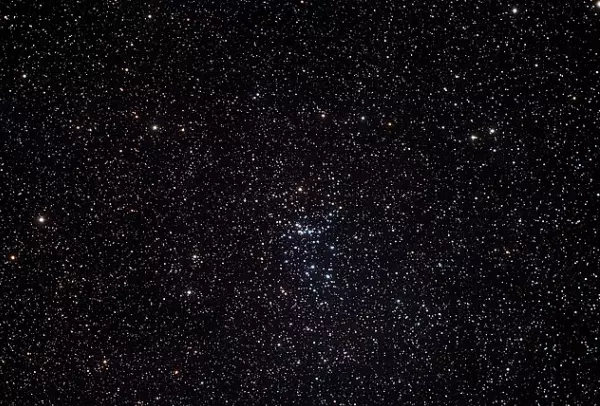
Messier 49: NGC 4472
NGC 4472 (M49) is a giant elliptical galaxy located 55.9 million light years away in the constellation Virgo. It is the brightest galaxy in the Virgo Cluster. M49 has an apparent magnitude of 9.4 and an apparent size of 10.2 by 8.2 arcminutes. It is the central galaxy in the Virgo B subcluster, which lies about 4.5 degrees from the dynamic centre of the Virgo Cluster.
Right ascension: 12h 29m 46.798s
Declination: +08° 00′ 01.48″
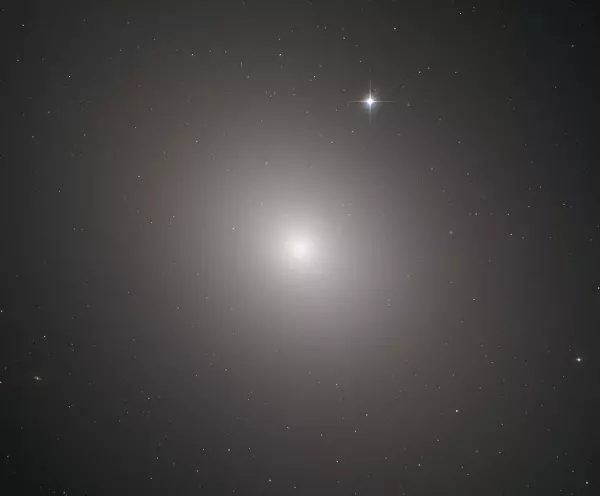
Messier 50: NGC 2323
NGC 2323 (M50) is an open cluster approximately 2,870 light years away in the constellation Monoceros. It spans 17.8 light years and stretches across 16 arcminutes of the apparent sky. With an apparent magnitude of 5.9, it can be observed in binoculars. M50 appears about two fifths of the way from Sirius in Canis Major to Procyon in Canis Minor. It has an estimated age of 140 million years.
Right ascension: 07h 02m 47.5s
Declination: −08° 20′ 16″
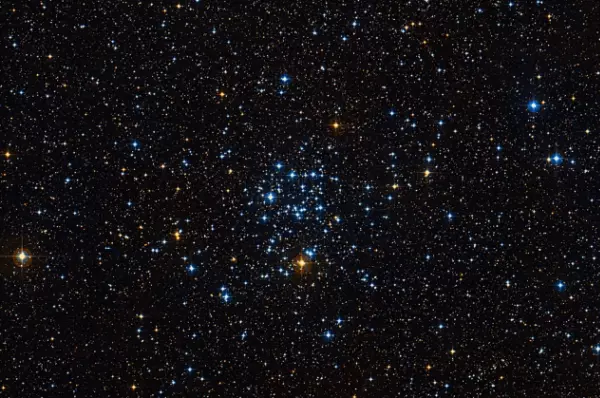
Messier 51: Whirlpool Galaxy (NGC 5194, NGC 5195)
The Whirlpool Galaxy (M51) is a famous grand-design spiral galaxy 31 million light years away in the constellation Canes Venatici. It is the brightest member of the M51 Group, a galaxy group that also includes the Sunflower Galaxy (M63) and several fainter galaxies. M51 has an apparent magnitude of 8.4 and an apparent size of 11.2 by 6.9 arcminutes, corresponding to a linear diameter of 76,000 light years. The galaxy is interacting with a smaller companion, the dwarf galaxy NGC 5195 (Messier 51b). NGC 5195 has an apparent magnitude of 10.5 and lies approximately 25 million light years away. The galaxies appear 3.5 degrees southwest of Alkaid (Eta Ursae Majoris), the star at the tip of the Big Dipper’s handle. M51 can be seen in binoculars in good conditions. Its spiral structure is visible in 6-inch and larger telescopes under dark skies.
Right ascension: 13h 29m 52.698s
Declination: +47° 11′ 42.93″
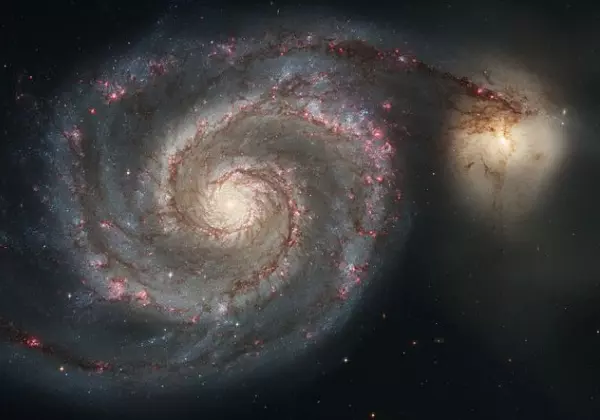
Messier 52: NGC 7654
NGC 7654 (M52) is a bright open cluster about 4,600 light years away in the constellation Cassiopeia. It can be found by extending a line from Schedar (bottom right star of Cassiopeia’s W) through Caph (top right star of the W) in the direction of the constellation Cepheus. The cluster has an apparent magnitude of 6.9 and an apparent size of 13 arcminutes. It is about 158.5 million years old.
Right ascension: 23h 24m 46.8s
Declination: +61° 35′ 24″
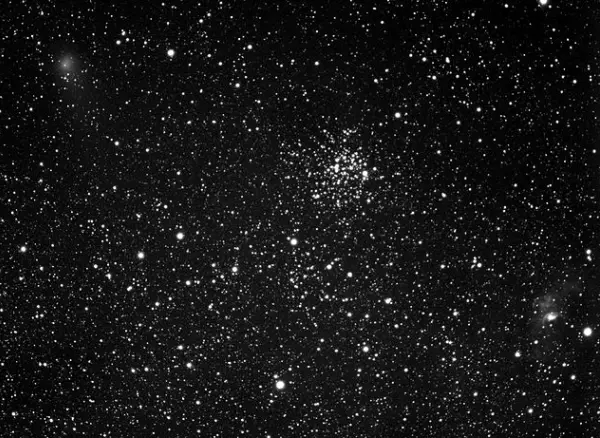
Messier 53: NGC 5024
NGC 5024 (M53) is a globular cluster approximately 58,000 light years away in the constellation Coma Berenices. It has an apparent magnitude of 8.33 and an apparent size of 13 arcminutes. It is connected with the fainter neighbour NGC 5053 (mag. 9.96) by a tidal bridge-like structure. The estimated age of M53 is 12.3 billion years. The cluster appears near the magnitude 4.29 star Diadem (Alpha Comae Berenices).
Right ascension: 13h 12m 55.25s
Declination: +18° 10′ 05.4″
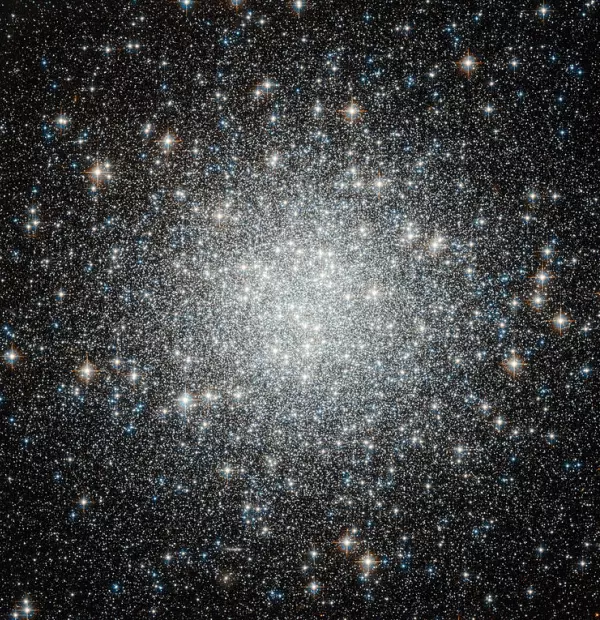
Messier 54: NGC 6715
NGC 6715 (M54) is a dense globular cluster approximately 87,400 light years away in Sagittarius. It appears near Ascella (Zeta Sagittarii), within the Teapot asterism. The cluster has an apparent magnitude of 8.37 and an apparent size of 12 arcminutes, corresponding to a physical radius of 153 light-years. It is believed to belong to the Sagittarius Dwarf Elliptical Galaxy (SagDEG), one of the satellite galaxies of the Milky Way.
Right ascension: 18h 55m 03.33s
Declination: −30° 28′ 47.5″
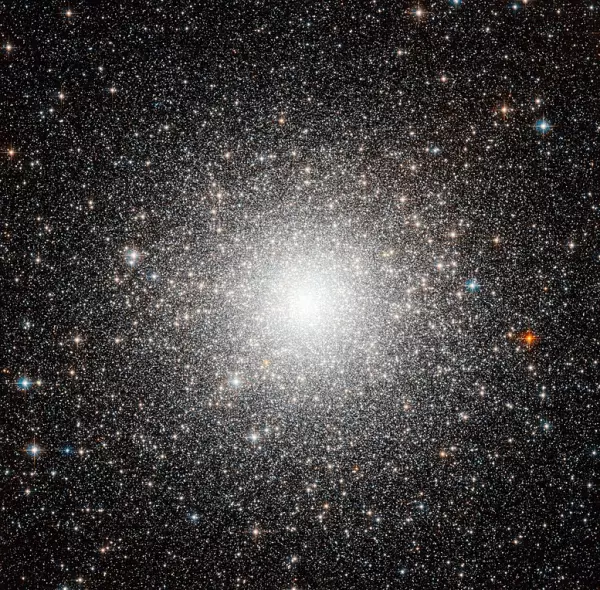
Messier 55: NGC 6809
NGC 6089 (M55) is another globular cluster in Sagittarius. It has an apparent magnitude of 7.42 and lies 17,600 light years from the Sun. It has a linear radius of 48 light years. The estimated age of M55 is 12.3 billion years. Its brightest stars can be resolved in a medium-sized telescope.
Right ascension: 19h 39m 59.71s
Declination: −30° 57′ 53.1″
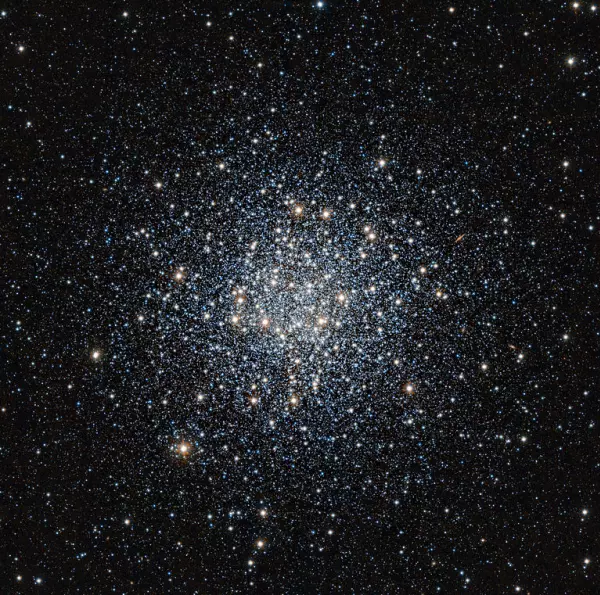
Messier 56: NGC 6779
NGC 6779 (M56) is a globular cluster approximately 32,900 light years away in the constellation Lyra. The cluster is about 84 light years across. It appears roughly halfway from Albireo at the beak of the Swan to Sulafat in Lyra. With an apparent magnitude of 8.3 and an apparent size of 8.8, the cluster can be seen in small telescopes. The brightest stars in M56 can be resolved in 8-inch and larger instruments. The estimated age of the cluster is about 13.70 billion years. M56 is one of the members of the Gaia Enceladus, the hypothesized dwarf galaxy absorbed by the Milky Way over 8 billion years ago.
Right ascension: 19h 16m 35.57s
Declination: +30° 11′ 00.5″
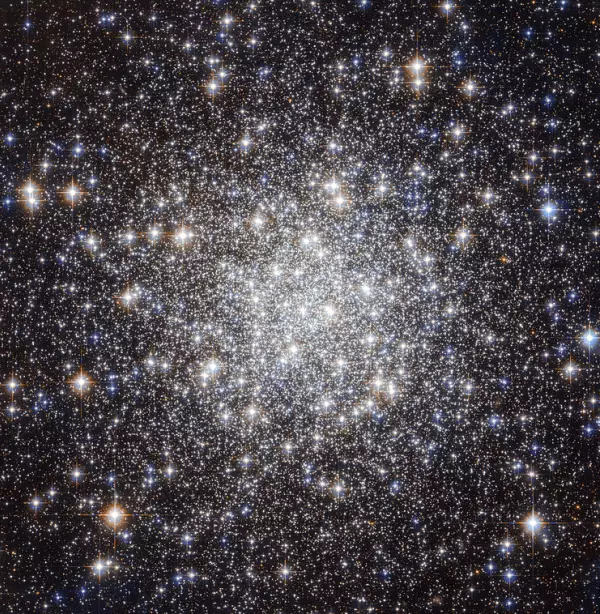
Messier 57: Ring Nebula (NGC 6720)
The Ring Nebula (M57) is a bright, large planetary nebula approximately 2,567 light-years away in Lyra. It has an apparent magnitude of 8.8 and an apparent size of 230 by 230 arcseconds. It appears between the stars Sheliak and Sulafat (Beta and Gamma Lyrae). The nebula has a linear radius of about 1.3 light years. Its central star has a visual magnitude of 14.8 and is challenging to spot.
Right ascension: 18h 53m 35.0967659112s
Declination: +33° 01′ 44.883287544″
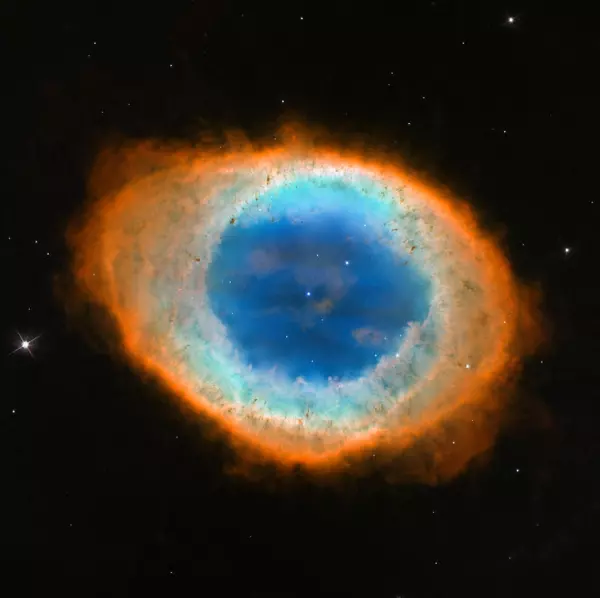
Messier 58: NGC 4579
NGC 4579 (M58) is an intermediate barred spiral galaxy about 62 million light years away in the constellation Virgo. It is one of the brightest members of the Virgo Cluster. M58 has an apparent magnitude of 10.5 and an apparent size of 5.9 by 4.7 arcminutes.
Right ascension: 12h 37m 43.597s
Declination: +11° 49′ 05.12″
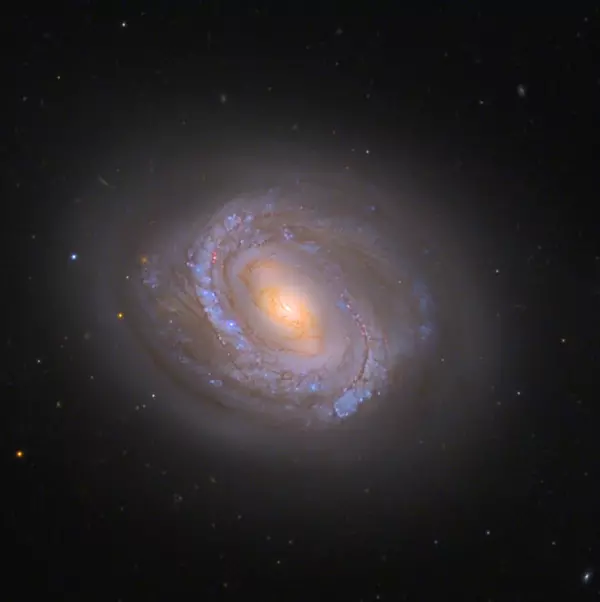
Messier 59: NGC 4621
NGC 4621 (M59) is an elliptical galaxy about 50.1 million light years away in the constellation Virgo. The galaxy is one of the brighter members of the Virgo Cluster. It has an apparent magnitude of 10.6 and occupies an area of 5.4 by 3.7 arcminutes of the apparent sky.
Right ascension: 12h 42m 02.2581375168s
Declination: +11° 38′ 48.909507756″
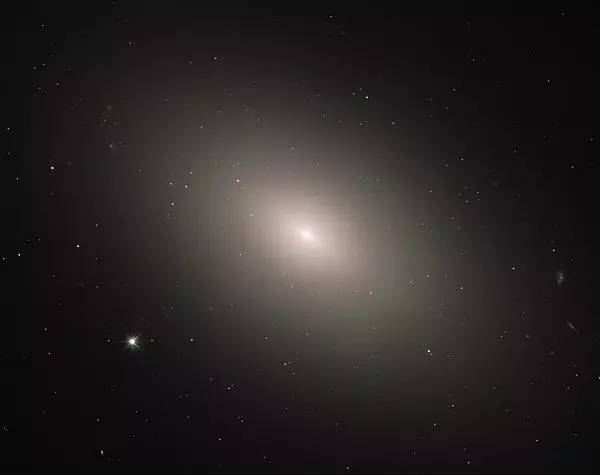
Messier 60: NGC 4649
NGC 4649 (M60) is an elliptical galaxy 56.7 million light years away in Virgo constellation. It has recently started interacting with its close neighbour, the intermediate spiral galaxy NGC 4647. The two galaxies are catalogued as Arp 116 in Halton Arp’s Atlas of Peculiar Galaxies. Like the nearby Messer 59, M60 is a member of the Virgo Cluster of galaxies. It is the third brightest giant elliptical galaxy in the cluster, after Messier 49 and Messier 87 (Virgo A). M60 has an apparent magnitude of 9.8 and an apparent size of 7.4 by 6.0 arcminutes.
Right ascension: 12h 43m 39.9708251928s
Declination: +11° 33′ 09.688174056″
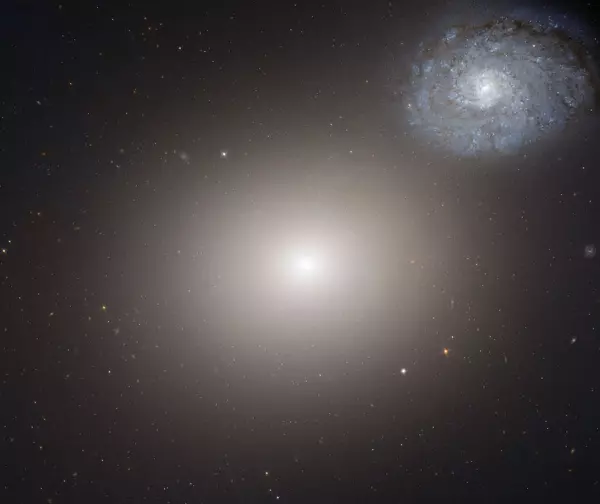
Messier 61: NGC 4303
NGC 4303 (M61) is a barred spiral galaxy approximately 52.5 million light years away in Virgo. It has an apparent magnitude of 10.18 and an apparent size of 6.5 by 5.8 arcminutes. It is one of the largest members of the Virgo Cluster. The galaxy has hosted eight observed supernovae since 1926.
Right ascension: 12h 21m 54.9282582888s
Declination: +04° 28′ 25.597367184″
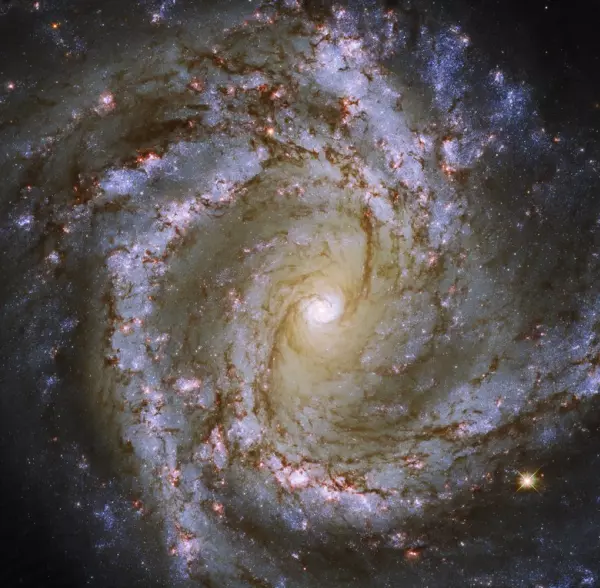
Messier 62: NGC 6266
NGC 6266 (M62) is a globular cluster about 21,500 light years away in the constellation Ophiuchus. It is one of the most massive and luminous globular clusters in our galaxy. The cluster has a tidal radius of 59 light years. It has an apparent magnitude of 6.45 and an apparent size of 15 arcminutes. Its estimated age is 11.78 billion years.
Right ascension: 17h 01m 12.60s
Declination: –30° 06′ 44.5″
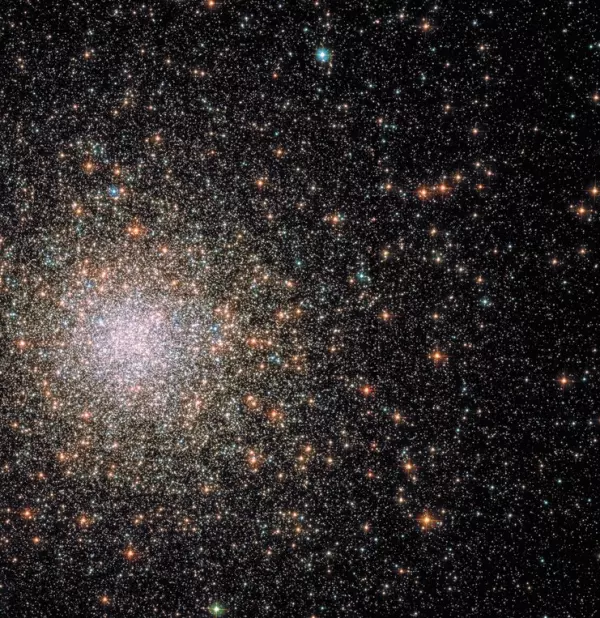
Messier 63: Sunflower Galaxy (NGC 5055)
The Sunflower Galaxy (M63) is a spiral galaxy approximately 29.3 million light years away in the constellation Canes Venatici. It appears along the imaginary line connecting Alkaid in Ursa Major and Cor Caroli in Canes Venatici. The galaxy has an apparent magnitude of 9.3 and an apparent size of 12.6 by 7.2 arcminutes. It is a member of the M51 Group, a group of galaxies named after its brightest member, the Whirlpool Galaxy (M51).
Right ascension: 13h 15m 49.2741893928s
Declination: +42° 01′ 45.728076108″
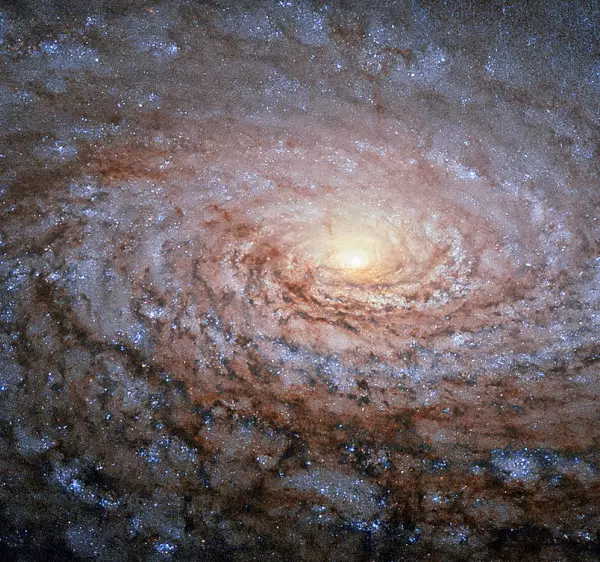
Messier 64: Black Eye Galaxy (NGC 4826)
The Black Eye Galaxy (M64) is a spiral galaxy about 17.3 million light years away in the constellation Coma Berenices. It is also known as the Sleeping Beauty Galaxy or the Evil Eye Galaxy. M64 has an apparent magnitude of 8.52 and an apparent size of 10.71 by 5.128 arcminutes, corresponding to a linear diameter of 54,000 light years.
Right ascension: 12h 56m 43.696s
Declination: +21° 40′ 57.57″
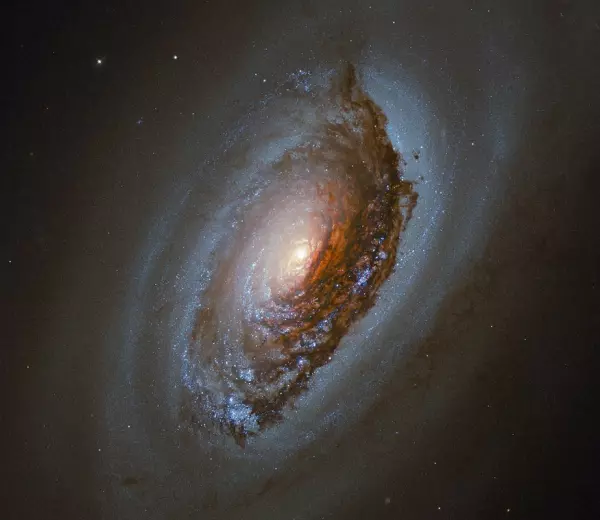
Messier 65: NGC 3623
NGC 3623 (M65) is a spiral galaxy approximately 35 million light years away in the constellation Leo. It appears on the imaginary line connecting Regulus and Denebola, about halfway between the fainter Theta and Iota Leonis. M65 is the faintest member of the Leo Triplet (the M66 Group), which also includes the galaxies M66 and NGC 3628. M65 has an apparent magnitude of 10.25 and an apparent size of 8.709 by 2.454 minutes of arc.
Right ascension: 11h 18m 55.9084654776s
Declination: +13° 05′ 32.300703672″
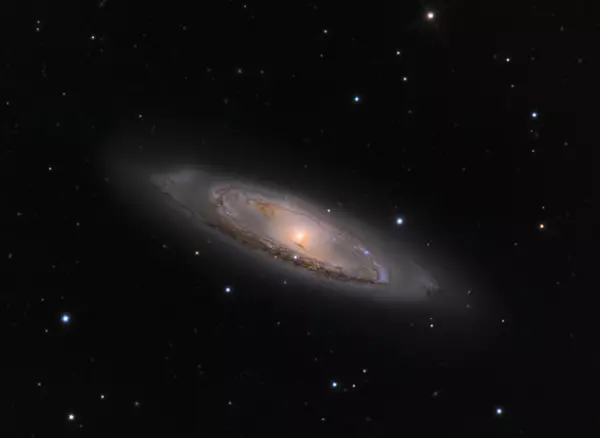
Messier 66: NGC 3627
NGC 3627 (M66) is the brightest galaxy in the Leo Triplet, with an apparent magnitude of 8.9. It is an intermediate spiral galaxy about 31 million light years away. M66 has an apparent size of 9.1 by 4.2 arcminutes and is separated from M65 by only 20 arcminutes. It is also the largest galaxy in the M66 Group, stretching across about 95,000 light-years.
Right ascension: 11h 20m 15.026s
Declination: +12° 59′ 28.64″
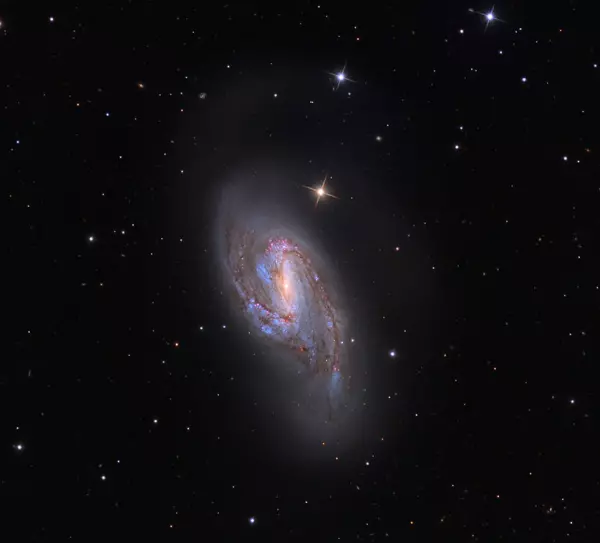
Messier 67: NGC 2682
NGC 2682 (M67) is an open cluster about 2,600 – 2,900 light years away in the constellation Cancer. It has an apparent magnitude of 6.1 and is 30 arcminutes across. It appears 1.75 degrees west of the magnitude 4.20 star Acubens (Alpha Cancri), roughly halfway and just north of the line connecting Regulus and Procyon. The cluster has a linear radius of 10 light years. It is one of the oldest open clusters in the Milky Way, with an estimated age of 3.2 to 5 billion years.
Right ascension: 08h 51m 23.0s
Declination: +11° 48′ 50′′
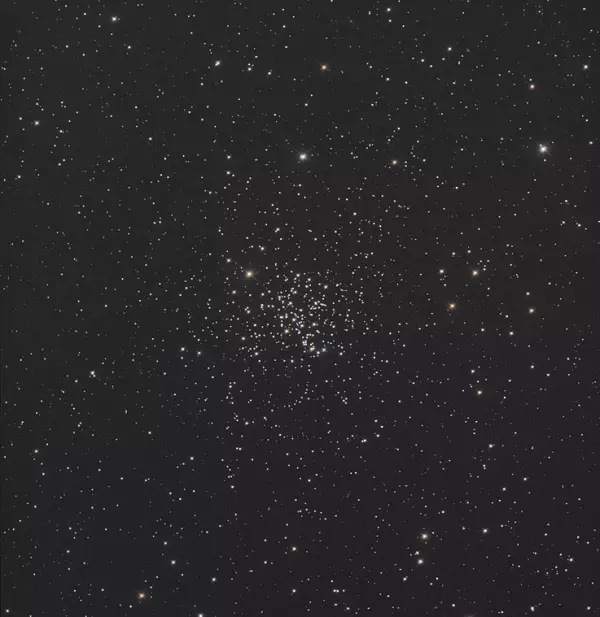
Messier 68: NGC 4590
NGC 4590 (M68) is a globular cluster approximately 33,600 light years away in the constellation Hydra. It appears near Spica’s Spanker, an asterism in Corvus constellation. The cluster has an apparent magnitude of 9.67 and an apparent size of 11 arcminutes, corresponding to a linear radius of 53 light-years. Its estimated age is 11.2 billion years.
Right ascension: 12h 39m 27.98s
Declination: –26° 44′ 38.6″
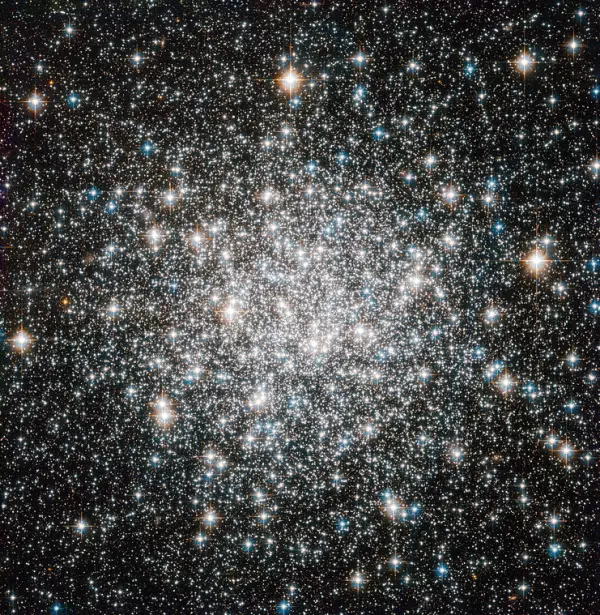
Messier 69: NGC 6637
NGC 6637 (M69) is a globular cluster in Sagittarius. It lies near Kaus Australis, within the Teapot asterism. The cluster has an apparent magnitude of 8.31 and an apparent size of 10.8 arcminutes. It has a tidal radius of 91.9 light years. It lies approximately 29,000 light years away. The estimated age of M69 is 13.06 billion years.
Right ascension: 18h 31m 23.10s
Declination: −32° 20′ 53.1″
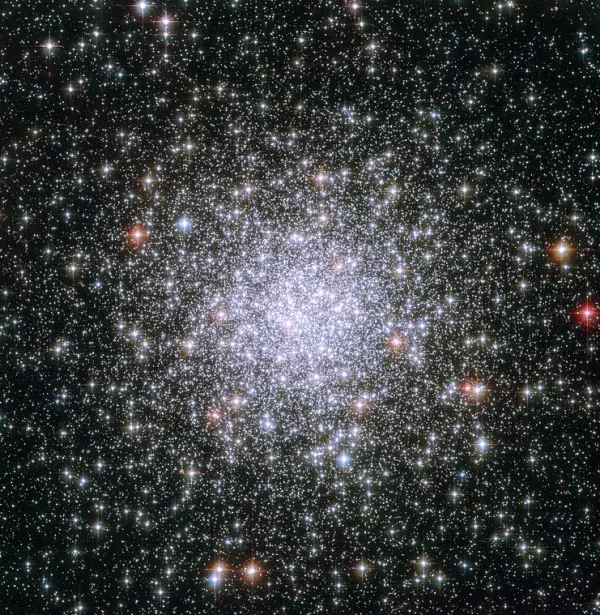
Messier 70: NGC 6681
NGC 6681 (M70) is a globular cluster approximately 29,400 light years away in Sagittarius. It appears roughly halfway from Ascella to Kaus Australis. It is a close neighbour of Messier 69. The two clusters may be separated by only 1,800 light-years. M70 has an apparent magnitude of 9.06 and an apparent size of 8 arcminutes. It estimated age is 12.80 billion years.
Right ascension: 18h 43m 12.76s
Declination: –32° 17′ 31.6″
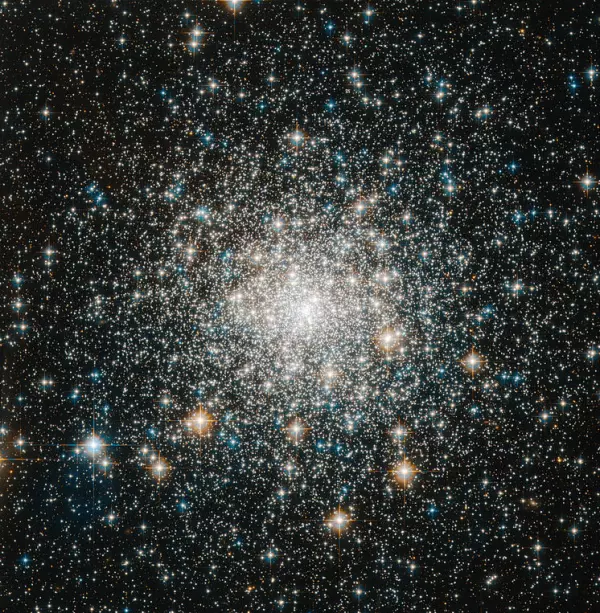
Messier 71: NGC 6838
NGC 6838 (M71) is a globular cluster approximately 13,000 light years away in the northern constellation Sagitta. It appears near the imaginary line connecting Gamma and Delta Sagittae in the constellation figure of the celestial Arrow. M71 has an apparent magnitude of 6.1 and an apparent size of 7.2 arcminutes, corresponding to a physical radius of 13 light-years. The estimated age of the cluster is 9 – 10 billion years.
Right ascension: 19h 53m 46.49s
Declination: +18° 46′ 45.1″
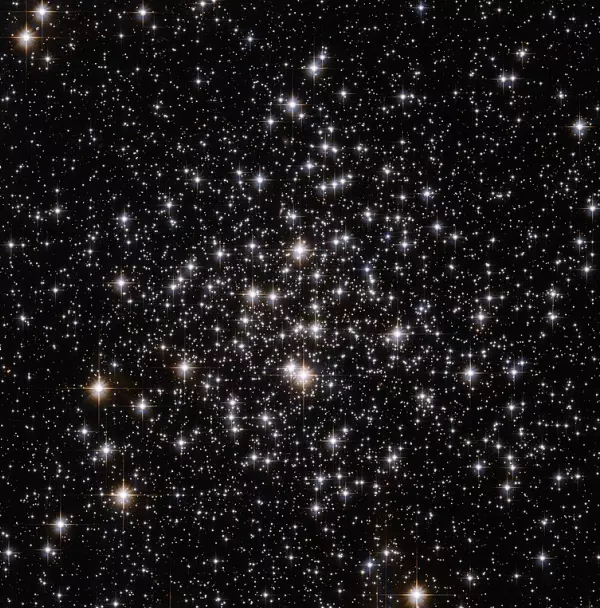
Messier 72: NGC 6981
NGC 6981 (M72) is a globular cluster approximately 54,570 light years away in the constellation Aquarius. It appears above the V-shaped pattern of Capricornus. The cluster has an apparent magnitude of 9.35 and an apparent size of 6.6 minutes of arc. Its estimated age is about 9.5 billion years. The cluster can be observed in small telescopes. The surrounding field stars can be resolved in 6-inch and larger telescopes.
Right ascension: 20h 53m 27.70s
Declination: –12° 32′ 14.3″
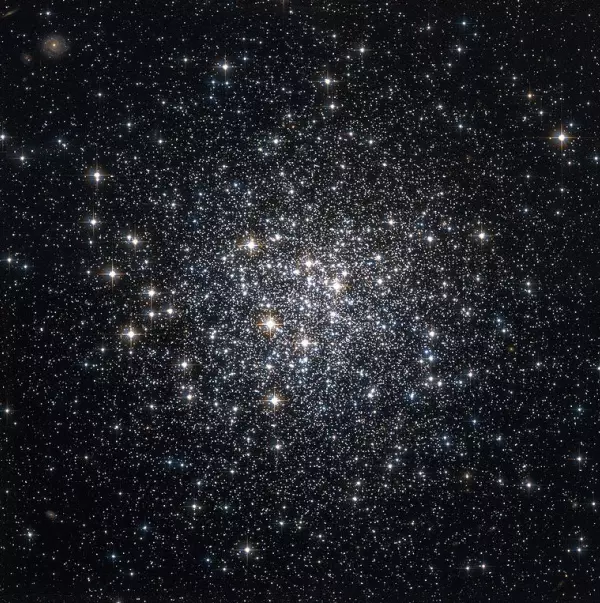
Messier 73: NGC 6994
NGC 6994 (M73) is an asterism appearing east of the cluster M72 in Aquarius. It consists of four stars that are now known not to be physically related to one another, even though they were once thought to form an open cluster. M73 has an apparent magnitude of 9.0 and occupies 2.8 arcminutes of the apparent sky.
Right ascension: 20h 58m 54s
Declination: −12° 38′
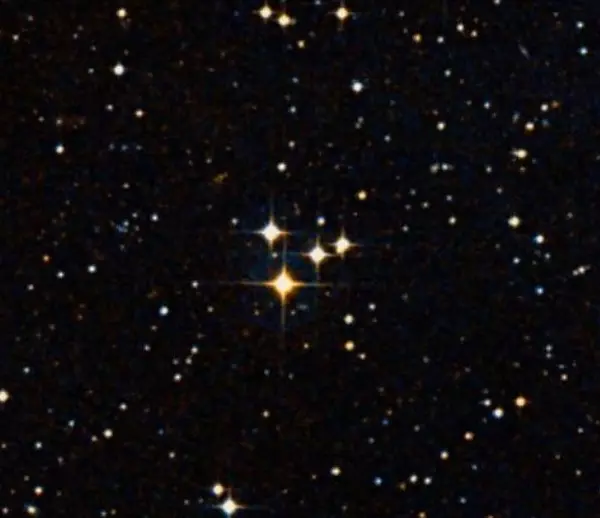
Messier 74: Phantom Galaxy (NGC 628)
The Phantom Galaxy (M74) is a grand design spiral galaxy approximately 30 million light years away in the constellation Pisces. It appears 1.5 degrees east-northeast of Alpherg (Eta Piscium), the brightest star in Pisces. It is the brightest member in the M74 Group of galaxies. M74 has an apparent magnitude of 10.0 and an apparent size of 10.5 by 9.5 arcminutes, corresponding to a linear diameter of 95,000 light years. The galaxy is believed to host about 100 billion stars.
Right ascension: 01h 36m 41.7451236624s
Declination: +15° 47′ 01.107512304″
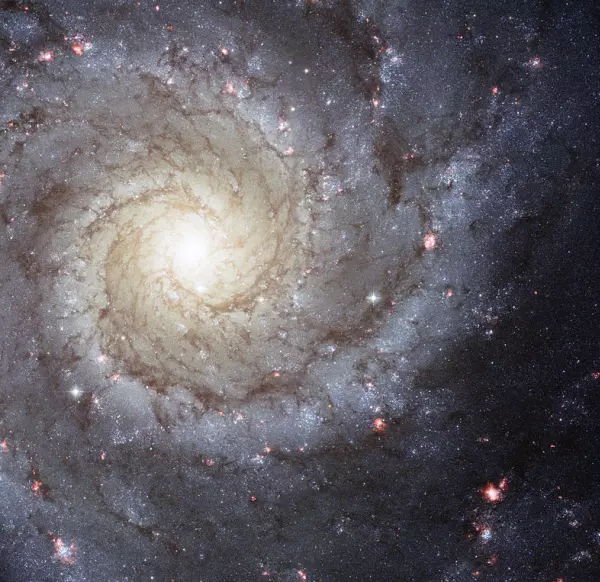
Messier 75: NGC 6864
NGC 6864 (M75) is a dense globular cluster about 68,000 light years away in Sagittarius. It has an apparent magnitude of 9.18 and occupies 6.8 arcminutes of the apparent sky. It has a linear radius of 67 light years. The cluster is part of the Gaia Enceladus, the hypothesized remains of a dwarf galaxy devoured by the Milky Way 8 to 11 billion years ago.
Right ascension: 20h 06m 04.85s
Declination: −21° 55′ 17.85″
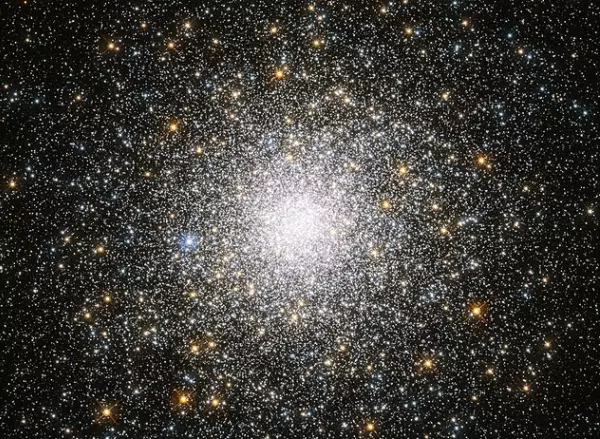
Messier 76: Little Dumbbell Nebula (NGC 650, NGC 651)
The Little Dumbbell Nebula (M76) is one of the four planetary nebulae listed in Messier’s catalogue. Named after the brighter and larger Dumbbell Nebula (M27) in Vulpecula, M76 lies approximately 2,500 light years away in the constellation Perseus. It has an apparent magnitude of 10.1 and an apparent size of 2.7 by 1.8 arcminutes. It appears near the hot blue star Phi Persei. The nebula has a diameter of 1.23 light years. It is sometimes also called the Cork Nebula or the Barbell Nebula. It has two designations in the New General Catalogue – NGC 650 and NGC 651 – because it was once believed to consist of two emission nebulae.
Right ascension: 01h 42m 19.6557728208s
Declination: +51° 34′ 31.534970052″
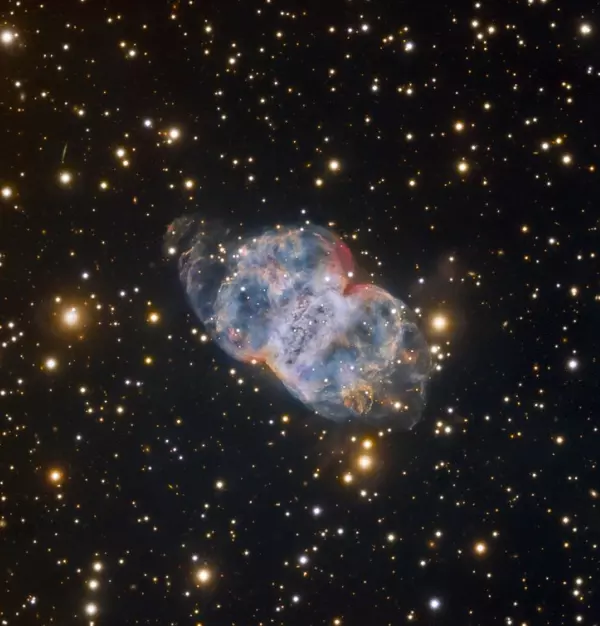
Messier 77: Cetus A (NGC 1068)
Cetus A (M77) is a barred spiral galaxy approximately 47 million light years away in the constellation Cetus. It appears about a degree southeast of Delta Ceti, near the circular asterism outlining the head of Cetus. It is sometimes known as the Squid Galaxy. With an apparent magnitude of 9.6 and an apparent size of 7.1 by 6 arcminutes, it can be observed in small telescopes.
Right ascension: 02h 42m 40.7091669408s
Declination: −00° 00′ 47.859690204″
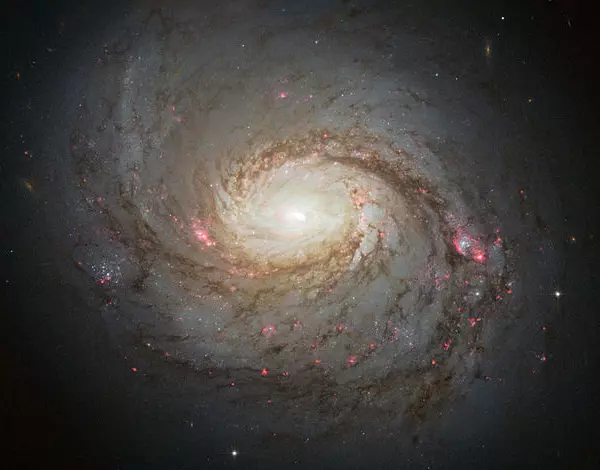
Messier 78: NGC 2068
NGC 2068 (M78) is a bright, large reflection nebula approximately 1,350 light years away in the constellation Orion. It is visible in small telescopes. It has an apparent magnitude of 8.3 and an apparent size of 8 by 6 arcminutes. The nebula appears about 2 degrees north and 1.5 degrees west of Alnitak, the leftmost star of Orion’s Belt. It can be found at the intersection of the imaginary lines connecting Alnitak and Betelgeuse, and Bellatrix and Sirius. M78 has a radius of 5 light years. It is part of the Orion B molecular cloud complex, a region within the much larger Orion Molecular Cloud Complex.
Right ascension: 05h 46m 46.7s
Declination: +00° 00′ 50″
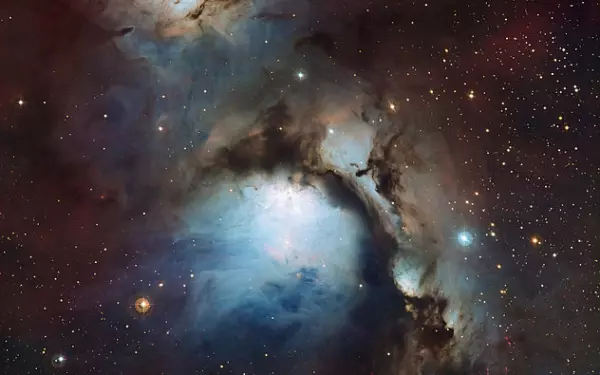
Messier 79: NGC 1904
NGC 1904 (M79) is a globular cluster about 42,000 light years away in the constellation Lepus. It has an apparent magnitude of 8.56 and an apparent size of 8.7 arcminutes. The estimated age of the cluster is about 11.7 billion years.
Right ascension: 05h 24m 10.59s
Declination: −24° 31′ 27.3″
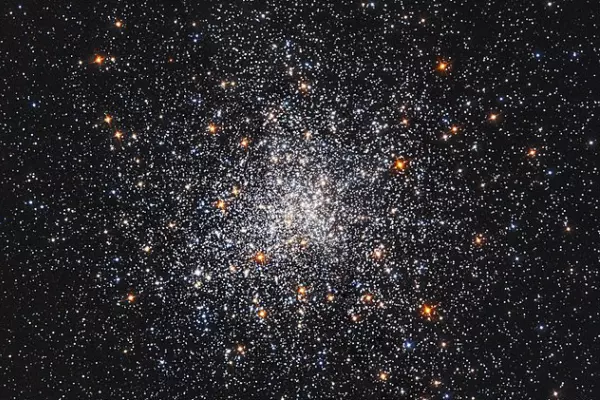
Messier 80: NGC 6093
NGC 6093 (M80) is a globular cluster appearing about halfway between Antares (Alpha Scorpii) and Acrab (Beta Scorpii). With an apparent magnitude of 7.87 and an apparent size of 10 arcminutes, the cluster can be observed in small telescopes. It has a physical diameter of about 95 light years. The estimated age of the cluster is about 13.5 billion years.
Right ascension: 16h 17m 02.41s
Declination: –22° 58′ 33.9″
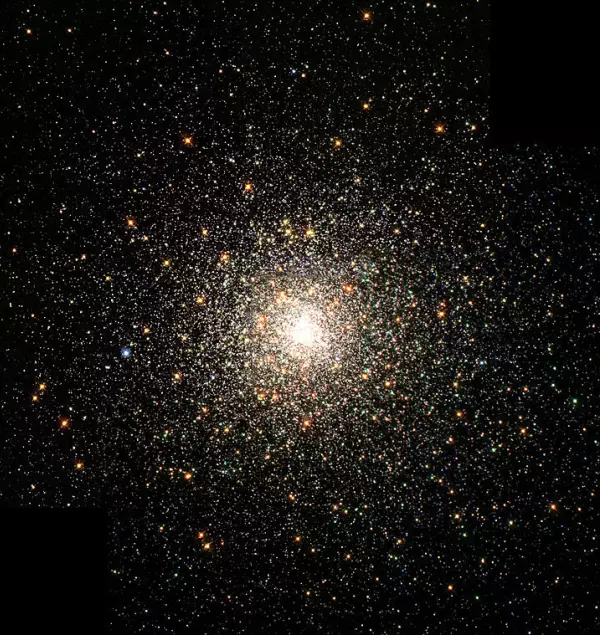
Messier 81: Bode’s Galaxy (NGC 3031)
Bode’s Galaxy (M81) is a grand design spiral galaxy approximately 12 million light years away in the constellation Ursa Major. Spanning 90,000 light years across, M81 has an apparent magnitude of 6.94 and an apparent size of 26.9 by 14.1 arcminutes. It is easily spotted in a small telescope. It was named after the German astronomer Johann Elert Bode, who discovered it on December 31, 1774. Bode’s Galaxy is the brightest galaxy in the M81 Group, which also includes Messier 82 and a number of fainter galaxies. It makes a fine visual pair with the Cigar Galaxy (M82), with which it is interacting. The galaxies appear about 10 degrees northwest of Dubhe, along the imaginary line extended from Phecda through Dubhe by about the same distance as that between the two stars.
Right ascension: 09h 55m 33.1726556496s
Declination: +69° 03′ 55.062505368″
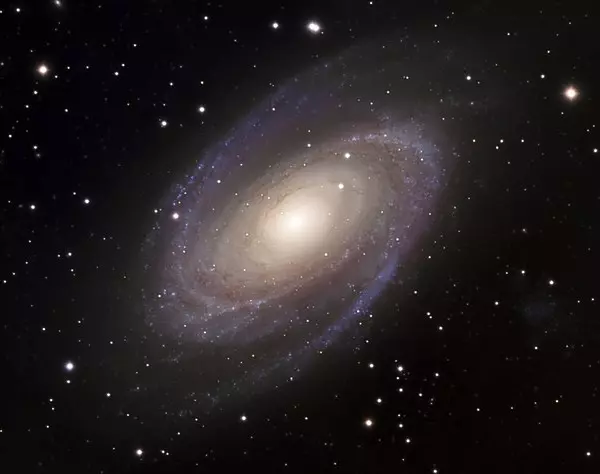
Messier 82: Cigar Galaxy (NGC 3034)
The Cigar Galaxy (M82) is an edge-on starburst galaxy about 12 million light years away in Ursa Major. It has an apparent magnitude of 8.41 and an apparent size of 11.2 by 4.3 arcminutes, corresponding to a linear diameter of about 37,000 light years. M82 is the nearest starburst galaxy to Earth. The starburst activity was likely triggered by the galaxy’s interaction with its brighter neighbour, M81.
Right ascension: 09h 55m 52.430s
Declination: +69° 40′ 46.93″
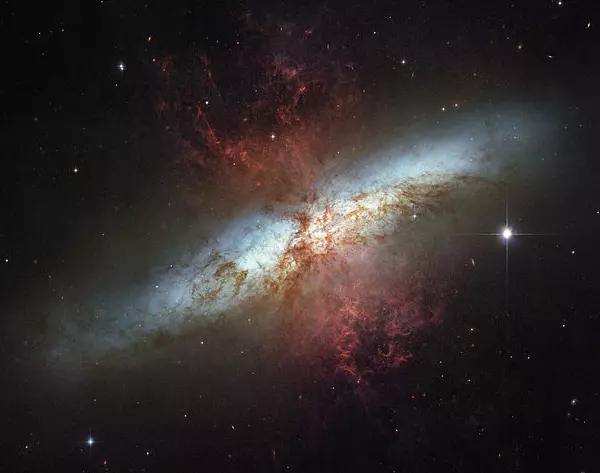
Messier 83: Southern Pinwheel Galaxy (NGC 5236)
The Southern Pinwheel Galaxy (M83) is a barred spiral galaxy about 14.7 million light years away in the constellation Hydra, right next to the border with Centaurus. It is the southernmost of the Messier galaxies. It forms an almost equilateral triangle with Theta and Iota Centauri. With an apparent magnitude of 7.54 and an apparent size of 12.9 by 11.5 arcminutes, M83 can be seen with binoculars. It was nicknamed the Southern Pinwheel for its resemblance to the Pinwheel Galaxy (M101) in Ursa Major.
Right ascension: 13h 37m 00.8839937904s
Declination: −29° 51′ 55.938854484″
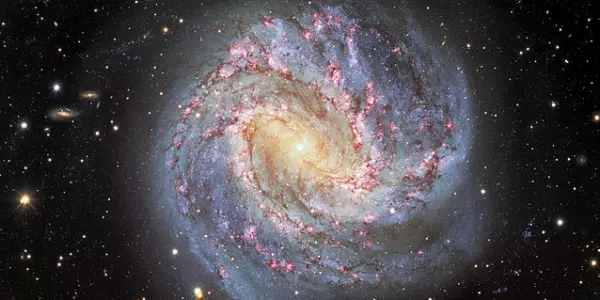
Messier 84: NGC 4374
NGC 4374 (M84) is a giant elliptical or lenticular galaxy approximately 54.9 million light years away in the constellation Virgo. It is part of Markarian’s Chain, a curving line of galaxies in the centre of the Virgo Cluster. M84 has an apparent magnitude of 10.1 and occupies an area of 6.5 by 5.6 arcminutes of the apparent sky near its Messier neighbour M86.
Right ascension: 12h 25m 03.74333s
Declination: +12° 53′ 13.1393″
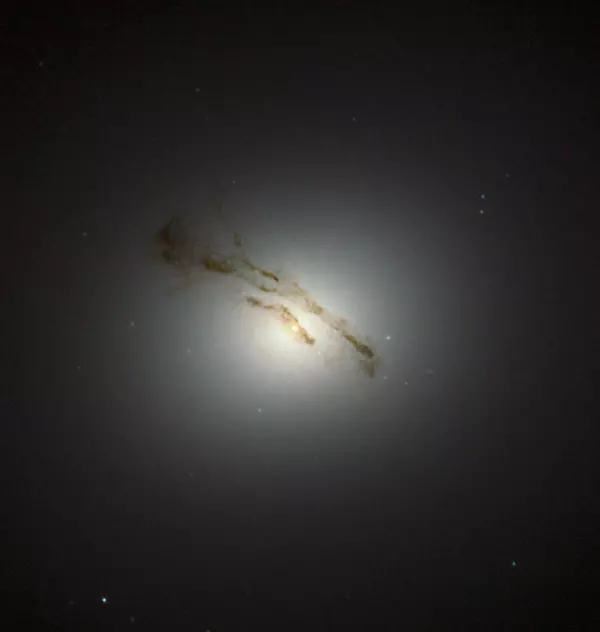
Messier 85: NGC 4382
NGC 4382 (M85) is a lenticular or elliptical galaxy approximately 60 million light years away in the constellation Coma Berenices. The galaxy is about 125,000 light years across. It appears at the northern edge of the Virgo Cluster, in the same field of view as the fainter barred spiral galaxy NGC 4394, with which it is interacting. M85 has an apparent magnitude of 10 and an apparent size of 7.1 by 5.5 arcminutes.
Right ascension: 12h 25m 24.053s
Declination: +18° 11′ 27.89″
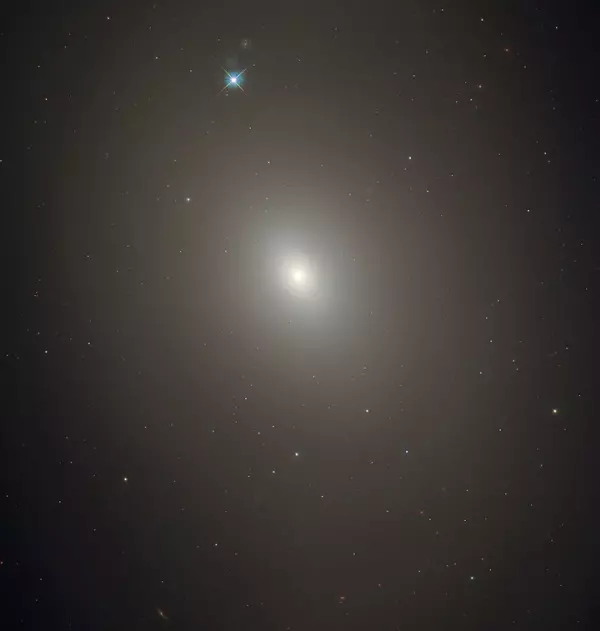
Messier 86: NGC 4406
NGC 4406 (M86) is an elliptical or lenticular galaxy approximately 52 million light years away in the constellation Virgo. Like its close neighbour M84, it is part of Markarian’s Chain in the central region of the Virgo Cluster of galaxies. The galaxy has an apparent magnitude of 9.83 and an apparent size of 8.9 by 5.8 arcminutes.
Right ascension: 12h 26m 11.814s
Declination: +12° 56′ 45.49″
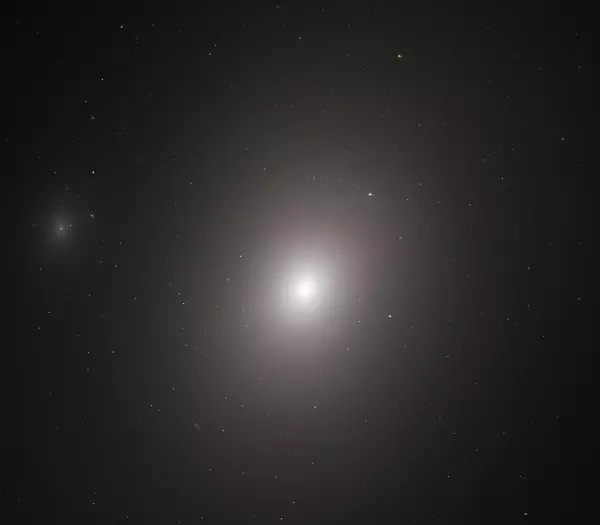
Messier 87: Virgo A (NGC 4486)
Virgo A (M87) is a supergiant elliptical galaxy approximately 53.5 million light years away in the constellation Virgo. It is one of the most massive galaxies in the local neighbourhood, containing several trillion stars and about 15,000 globular clusters. The galaxy has an estimated mass up to 200 times that of the Milky Way. It hosts the first supermassive black hole to be directly imaged. The images of the black hole were captured by the Event Horizon Telescope (EHT) in 2017. M87 has an apparent magnitude of 8.79 and an apparent size of 7.2 by 6.8 arcminutes. It appears almost exactly halfway between Vindemiatrix in Virgo and Denebola in Leo, near Markarian’s Chain of galaxies in the centre of the Virgo Cluster. It is the second brightest member of the Virgo Cluster, after M49.
Right ascension: 12h 30m 49.42338230s
Declination: +12° 23′ 28.0438581″
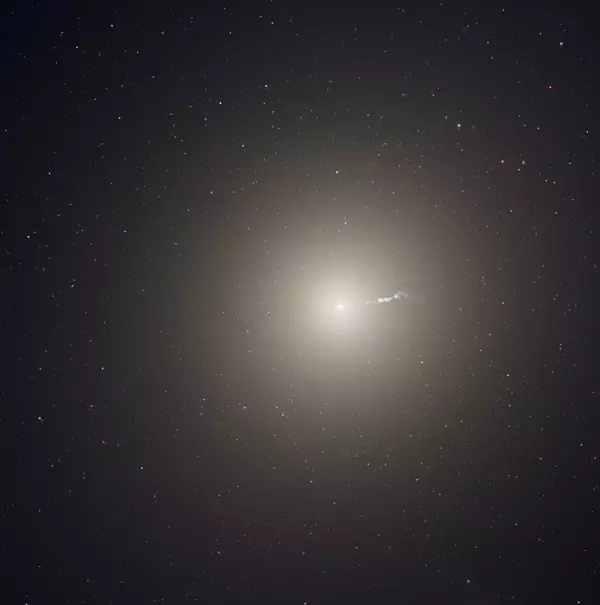
Messier 88: NGC 4501
NGC 4501 (M88) is a spiral galaxy 50 – 60 million light years away in the Virgo Cluster. It lies in the constellation Coma Berenices. It has an apparent magnitude of 10.4 and an apparent size of 6.9 by 3.7 minutes of arc. The galaxy appears above Markarian’s Chain, northeast of Messier 84 and Messier 86, near the barred spiral galaxy Messier 91.
Right ascension: 12h 31m 59.1525062448s
Declination: +14° 25′ 13.148971824″
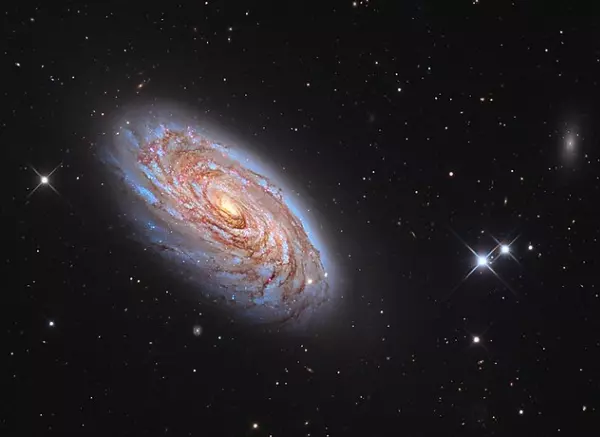
Messier 89: NGC 4552
NGC 4552 (M89) is an elliptical galaxy about 50 million light years away in Virgo. It lies near the centre of the Virgo Cluster. The galaxy has an apparent magnitude of 9.8 and an apparent size of 5.1 by 4.7 arcminutes.
Right ascension: 12h 35m 39.8073444s
Declination: +12° 33′ 22.830809″
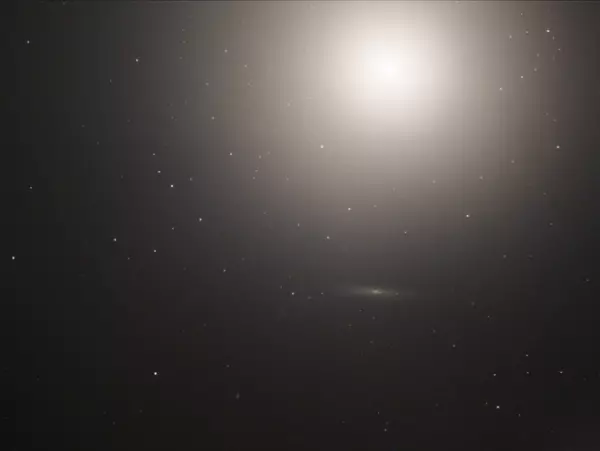
Messier 90: NGC 4569
NGC 4569 (M90) is an intermediate spiral galaxy about 58.7 million light years away in Virgo. It appears near the centre of the Virgo Cluster. M90 is one of the brightest and largest spiral galaxies in the cluster. It has an apparent magnitude of 10.26 and an apparent size of 9.5 by 4.4 arcminutes.
Right ascension: 12h 36m 49.8009839880s
Declination: +13° 09′ 46.523813040″
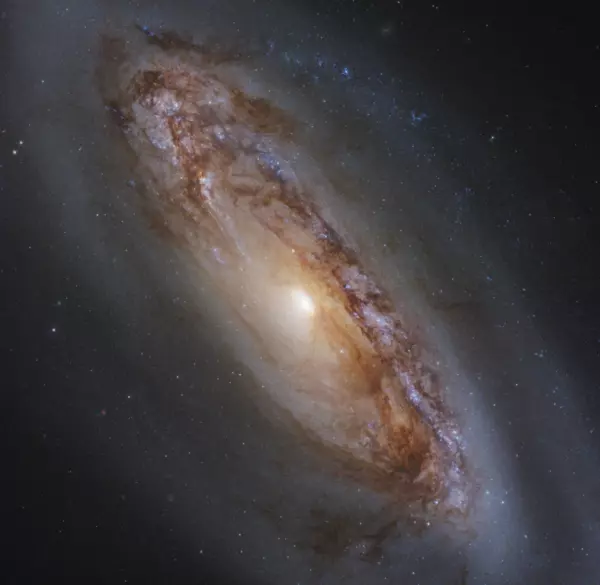
Messier 91: NGC 4548
NGC 4548 (M91) is a barred spiral galaxy approximately 63 million light years away in Coma Berenices. It is a member of the Virgo Cluster. M91 has an apparent magnitude of 11 and an apparent size of 5.4 by 4.3 minutes of arc. It is classified as an anemic galaxy, i.e. one with little star forming activity compared to other galaxies of the same type.
Right ascension: 12h 35m 26.4446761320s
Declination: +14° 29′ 46.760333748″
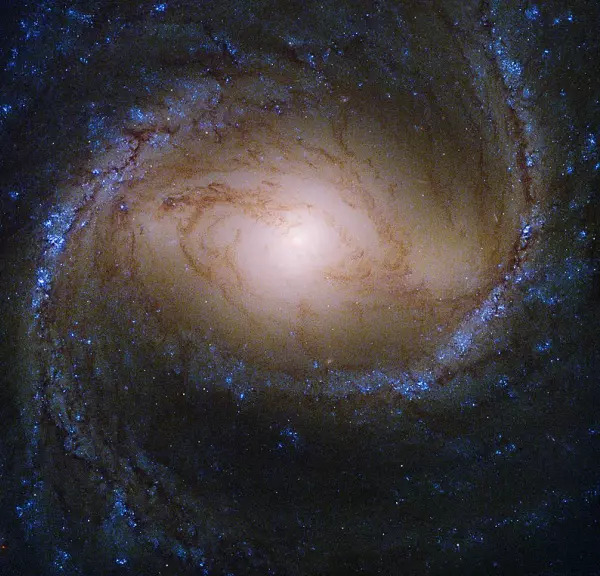
Messier 92: NGC 6341
NGC 6341 (M92) is a globular star cluster approximately 26,700 light years away in the constellation Hercules. It appears roughly 60% of the way from Eta to Iota Herculis. With an apparent magnitude of 6.3 and an apparent size of 14 arcminutes, the cluster is visible to the unaided eye under clear, dark skies. M92 is one of the oldest globular clusters in the Milky Way. The estimated age of the cluster is 14.2 billion years.
Right ascension: 17h 17m 07.39s
Declination: +43° 08′ 09.4″
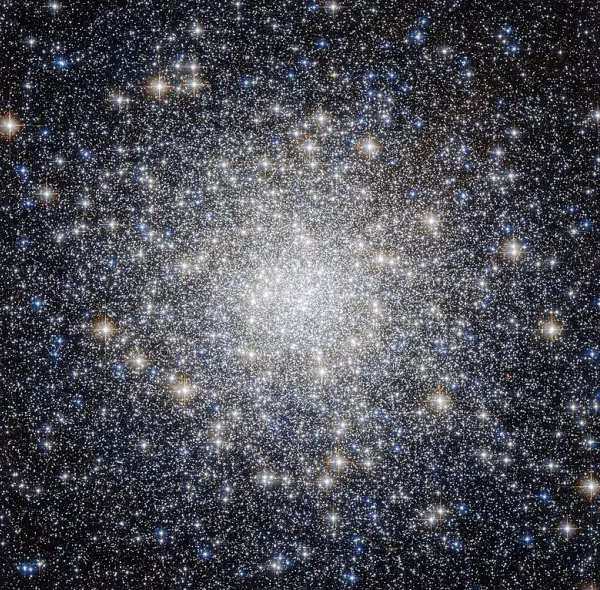
Messier 93: NGC 2447
NGC 2447 (M93) is a bright open cluster approximately 3,380 light years away in the constellation Puppis. With an apparent magnitude of 6.2 and an apparent size of 10 arcminutes it is easily observed in small telescopes. M93 has a core radius of 4.2 light years and a tidal radius of about 13.1 light years. The estimated age of the cluster is 387.3 million years.
Right ascension: 07h 44m 33.8s
Declination: −23° 51′ 11″
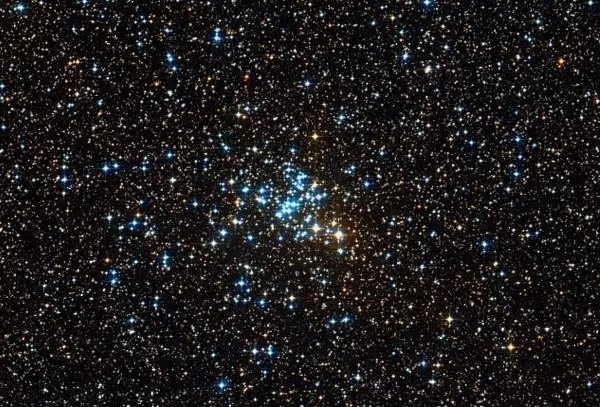
Messier 94: Cat’s Eye Galaxy (NGC 4736)
The Cat’s Eye Galaxy (M94) is a spiral galaxy about 16 million light years away in the constellation Canes Venatici. The galaxy has an apparent magnitude of 8.99 and an apparent size of 11.2 by 9.1 arcminutes. It is one of the brightest members of the Canes Venatici I Group (M94 Group), which may also include the spiral galaxy Messier 106. The Cat’s Eye Galaxy appears near Cor Caroli, the brightest star in Canes Venatici.
Right ascension: 12h 50m 53.0737971432s
Declination: +41° 07′ 12.900884628″
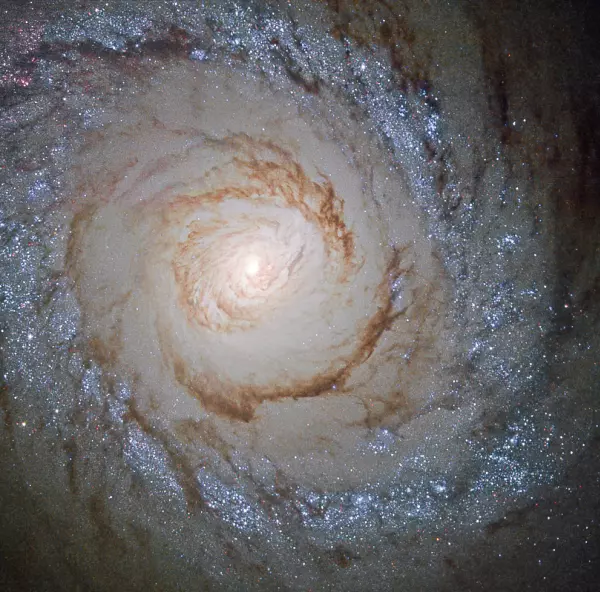
Messier 95: NGC 3351
NGC 3351 (M95) is a barred spiral galaxy approximately 32.6 million light years away in the constellation Leo. Located in the region between Regulus and Denebola, the galaxy has an apparent magnitude of 11.4 and an apparent size of 3.1 by 2.9 arcminutes. It is a member of the Leo I Group (M96 Group), which also includes the brighter spiral galaxy Messier 96 and the elliptical galaxy Messier 105. The group lies physically near the Leo Triplet (M65, M66 and NGC 3628).
Right ascension: 10h 43m 57.7313485800s
Declination: +11° 42′ 13.301191332″
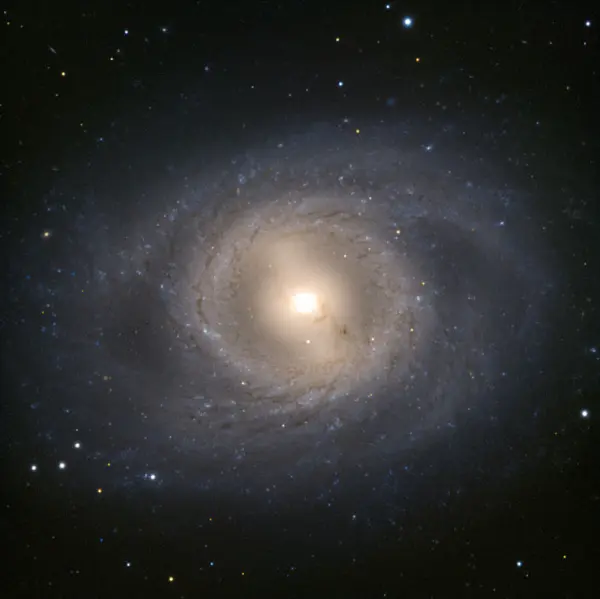
Messier 96: NGC 3368
NGC 3368 (M96) is a double-barred spiral galaxy about 31 million light years away in the constellation Leo. It has an apparent magnitude of 10.1 and occupies an area of 7.6 by 5.1 arcminutes of the apparent sky. It is the brightest member of the M96 Group, a group of galaxies that contains between 8 and 24 galaxies, including M95 and M105.
Right ascension: 10h 46m 45.744s
Declination: +11° 49′ 11.78″
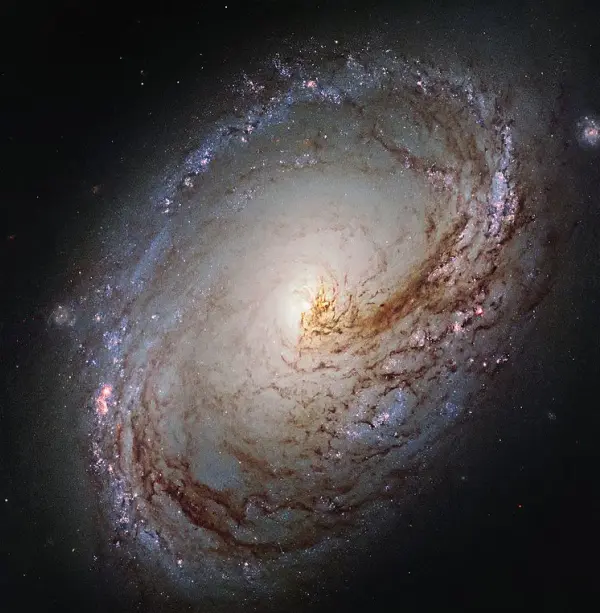
Messier 97: Owl Nebula (NGC 3587)
The Owl Nebula (M97) is a planetary nebula appearing near Merak (Beta Ursae Majoris) in the constellation Ursa Major. The nebula has an apparent magnitude of 9.9 and an apparent size of 3.4 by 3.3 arcminutes. It lies approximately 2,030 light years away and has a radius of 0.91 light-years. It appears in the same wide field as the barred spiral galaxy Messier 108. The nebula can be seen in small telescopes in exceptionally good conditions, but its owl-like eyes can only be made out in 10-inch and larger telescopes.
Right ascension: 11h 14m 47.7122947800s
Declination: +55° 01′ 08.482832076″
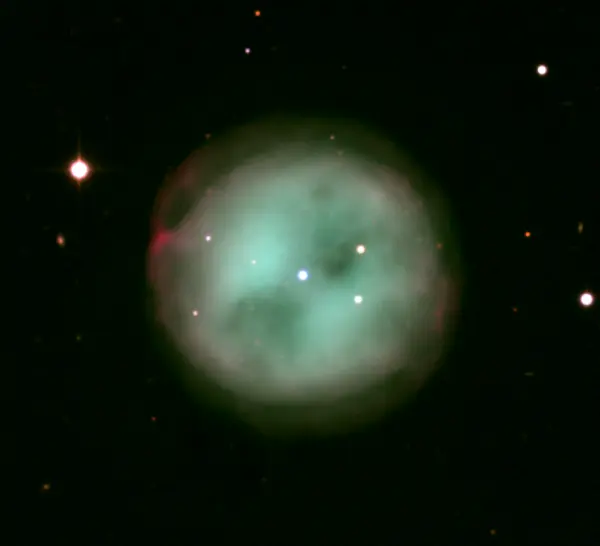
Messier 98: NGC 4192
NGC 4192 (M98) is an intermediate spiral galaxy approximately 44.4 million light years away in the constellation Coma Berenices. It appears about 6 degrees east of Denebola, the star marking the Lion’s tail. The galaxy has an apparent magnitude of 11.0 and an apparent size of 9.8 by 2.8 arcminutes. It is a member of the Virgo Cluster. It may have interacted with the nearby spiral galaxy Messier 99. The two galaxies are now separated by about 1.3 million light-years.
Right ascension: 12h 13m 48.2910686976s
Declination: +14° 54′ 01.953475200″
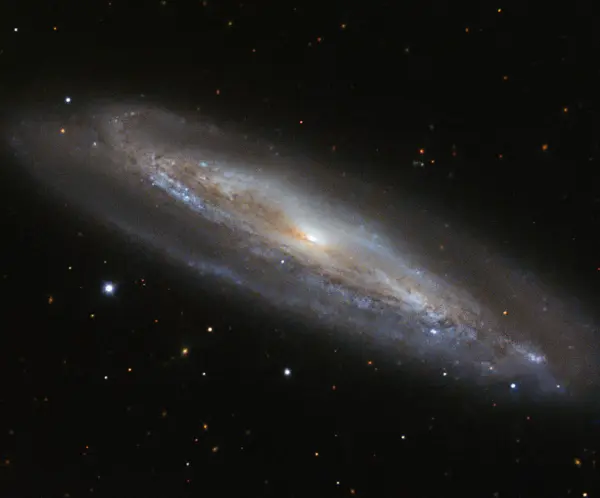
Messier 99: NGC 4254
NGC 4254 (M99) is a grand design spiral galaxy about 45.2 million light years away in Coma Berenices. It is a member of the Virgo Cluster of galaxies. It has an apparent magnitude of 10.4 and an apparent size of 5.4 by 4.7 arcminutes.
Right ascension: 12h 18m 49.625s
Declination: +14° 24′ 59.36″
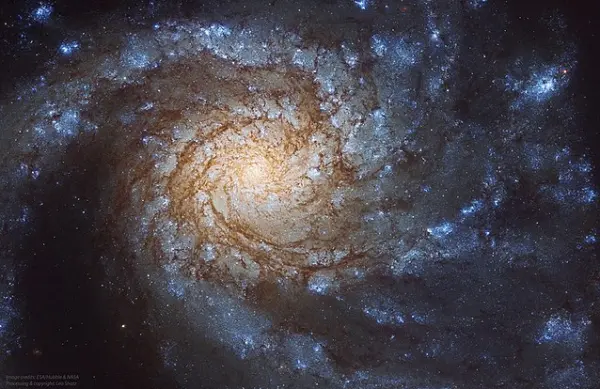
Messier 100: NGC 4321
NGC 4321 (M100) is a grand design intermediate spiral galaxy appearing in the same area as Messier 98 and Messier 99. Located in Coma Berenices, the galaxy is one of the brightest members of the Virgo Cluster. It lies about 55 million light years away and has an apparent magnitude of 9.5. It spans 107,000 light years and has an apparent size of 7.4 by 6.3 minutes of arc.
Right ascension: 12h 22m 54.9299993592s
Declination: +15° 49′ 20.296257960″
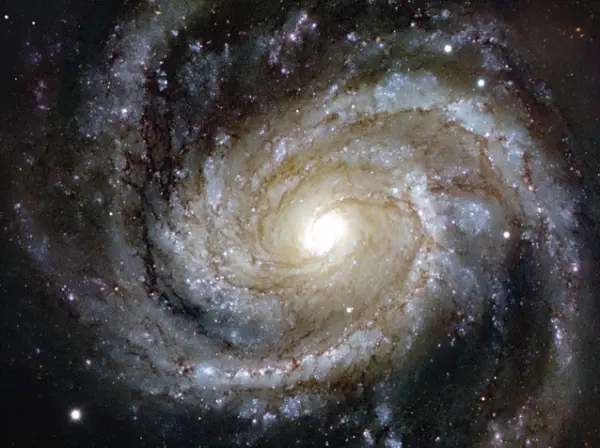
Messier 101: Pinwheel Galaxy (NGC 5457)
The Pinwheel Galaxy (M101) is a spiral galaxy 20.9 million light years away in the constellation Ursa Major. It has a diameter of about 170,000 light years and is home to 1 trillion stars. The galaxy has an apparent magnitude of 7.86, but its surface brightness is very low, making it one of the more challenging Messier objects to observe. Its spiral structure can only be seen in large telescopes. M101 occupies an area of 28.8 by 26.9 arcminutes. It is the brightest member of the M101 Group, a loose group of galaxies that forms a larger group with the nearby M51 Group and M102 Group (NGC 5866 Group).
Right ascension: 14h 03m 12.583s
Declination: +54° 20′ 55.50″
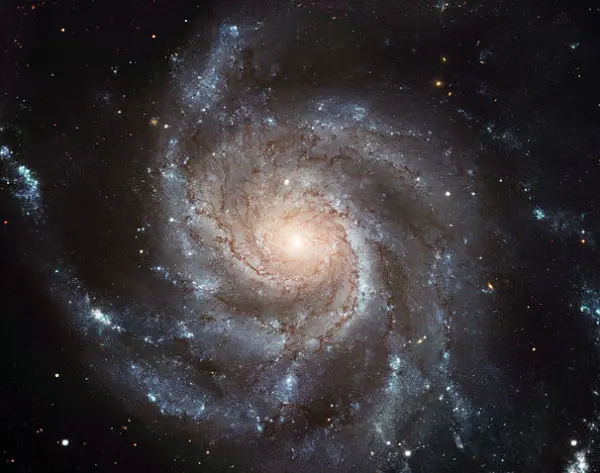
Project Investigators for the original Hubble data: K.D. Kuntz (GSFC), F. Bresolin (University of Hawaii), J. Trauger (JPL), J. Mould (NOAO), and Y.-H. Chu (University of Illinois, Urbana). Image processing: Davide De Martin (ESA/Hubble)
CFHT image: Canada-France-Hawaii Telescope/J.-C. Cuillandre/Coelum
NOAO image: George Jacoby, Bruce Bohannan, Mark Hanna/NOAO/AURA/NSF (CC BY 4.0)
Messier 102: Spindle Galaxy (NGC 5866)
The Spindle Galaxy (M102) is an edge-on lenticular galaxy approximately 50 million light years away in the constellation Draco. It has an apparent magnitude of 10.7 and an apparent size of 4.7 by 1.9 arcminutes, corresponding to a physical radius of about 60,000 light-years. The galaxy is the brightest member of the M102 Group.
Right ascension: 15h 06m 29.5s
Declination: +55° 45′ 48″
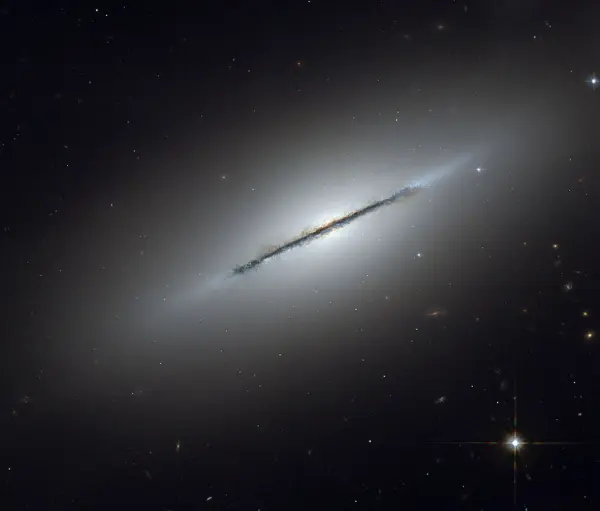
Messier 103: NGC 581
NGC 581 (M103) is an open cluster about 10,000 light-years away in the constellation Cassiopeia. It appears about a degree northeast of Ruchbah, the bottom left star of Cassiopeia’s W asterism. The cluster has an apparent magnitude of 7.4 and an apparent size of 6 arcminutes. It can be seen in binoculars. The estimated age of the cluster is about 25 million years.
Right ascension: 01h 33m 21.4s
Declination: +60° 39′ 32′′
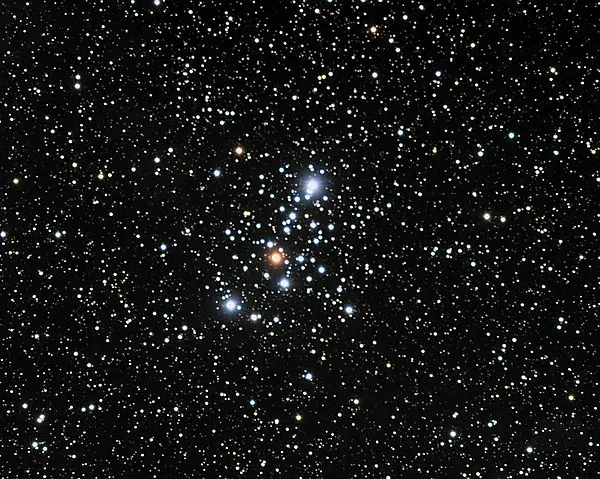
Messier 104: Sombrero Galaxy (NGC 4594)
The Sombrero Galaxy (M104) is a spiral galaxy approximately 31.1 million light years away in the constellation Virgo. It appears almost edge-on. It can be found using Spica, Virgo’s brightest star, and Spica’s Spanker (the Sail), an asterism formed by the brightest stars in Corvus. The galaxy is much smaller than our own, spanning 49,000 light years. It has an apparent magnitude of 8.0 and an apparent size of 9 by 4 arcminutes. It can be seen in binoculars and small telescopes, but is best observed in 8-inch and larger instruments.
Right ascension: 12h 39m 59.4302501832s
Declination: −11° 37′ 22.988264808″
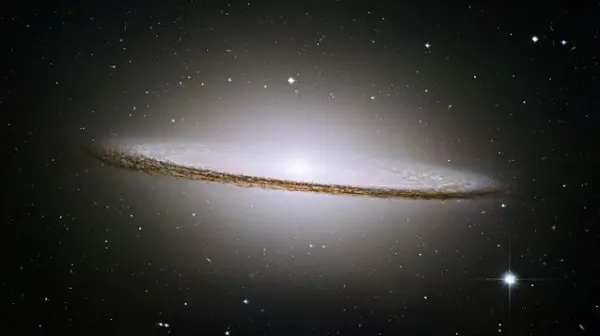
Messier 105: NGC 3379
NGC 3379 (M105) is an elliptical galaxy about 36.6 million light years away in the constellation Leo. It is a member of the Leo I Group, along with the spiral galaxies M95 and M96. Messier 105 has an apparent magnitude of 10.2 and an apparent size of 5.4 by 4.8 arcminutes.
Right ascension: 10h 47m 49.600s
Declination: +12° 34′ 53.87″
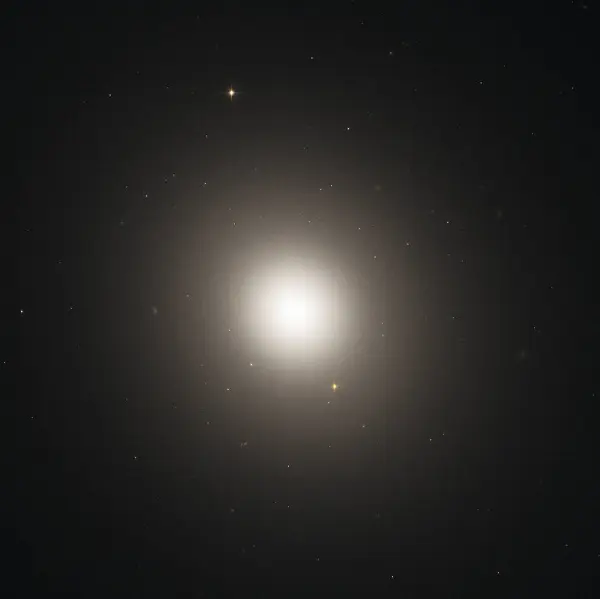
Messier 106: NGC 4258
NGC 4258 (M106) is an intermediate spiral galaxy about 23.7 million light years away in the constellation Canes Venatici. The galaxy appears on the imaginary line connecting Phecda in the Big Dipper and Cor Caroli, the brightest star in Canes Venatici. M106 has an apparent magnitude of 8.4 and an apparent size of 18.6 by 7.2 arcminutes. It spans 135,000 light years and is one of the largest and brightest galaxies in our neighbourhood.
Right ascension: 12h 18m 57.620s
Declination: +47° 18′ 13.39″
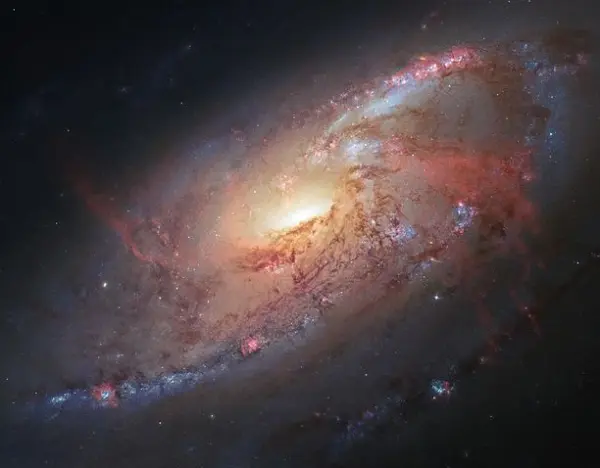
Messier 107: NGC 6171
NGC 6171 (M107) is a globular cluster approximately 20,900 light years away in the constellation Ophiuchus. It has an apparent magnitude of 8.85 and appears 10 arcminutes across. It lies 2.5 degrees south and a little west of Zeta Ophiuchi. The cluster has a radius of 30 light-years. Its estimated age is 13.95 billion years.
Right ascension: 16h 32m 31.86s
Declination: –13° 03′ 13.6″
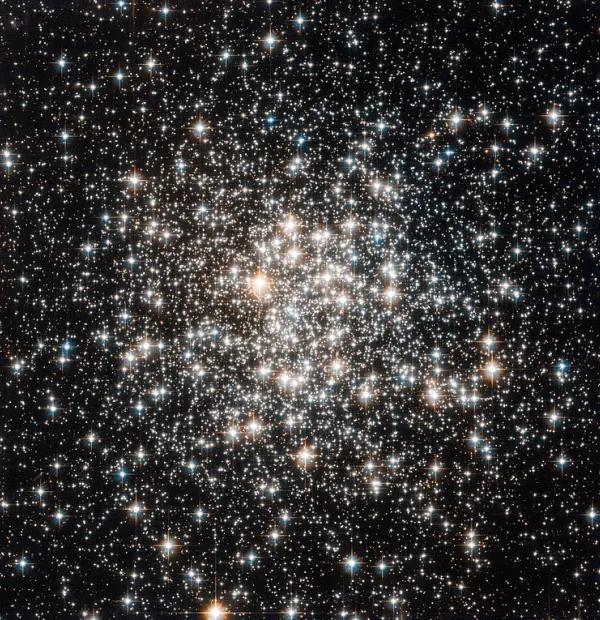
Messier 108: NGC 3556
NGC 3556 (M108) is a barred spiral galaxy approximately 45.9 million light years away in Ursa Major. It appears 1.5 degrees southeast of Merak in the Big Dipper, in the same wide field as the Owl Nebula (M97). The galaxy has an apparent magnitude of 10.7 and an apparent size of 8.7 by 2.2 arcminutes.
Right ascension: 11h 11m 31.0s
Declination: +55° 40′ 27″
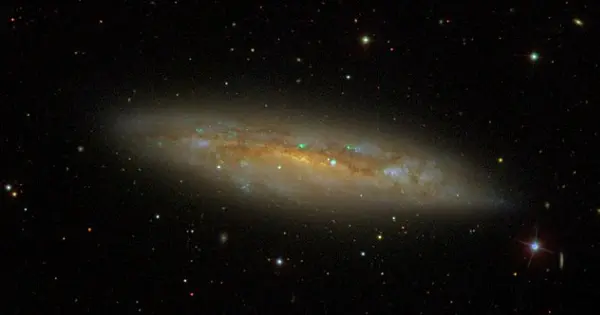
Messier 109: NGC 3992
NGC 3992 (M109) is a barred spiral galaxy about 83.5 million light years away in Ursa Major. It is the most distant of the 110 Messier objects. M109 appears only 40 arcminutes southeast of Phecda in the Big Dipper. It has an apparent magnitude of 10.6 and an apparent size of 7.6 by 4.7 arcminutes. The galaxy is the brightest member in the M109 Group, also known as the Ursa Major Cloud.
Right ascension: 11h 57m 35.9631479640s
Declination: +53° 22′ 29.006082336″
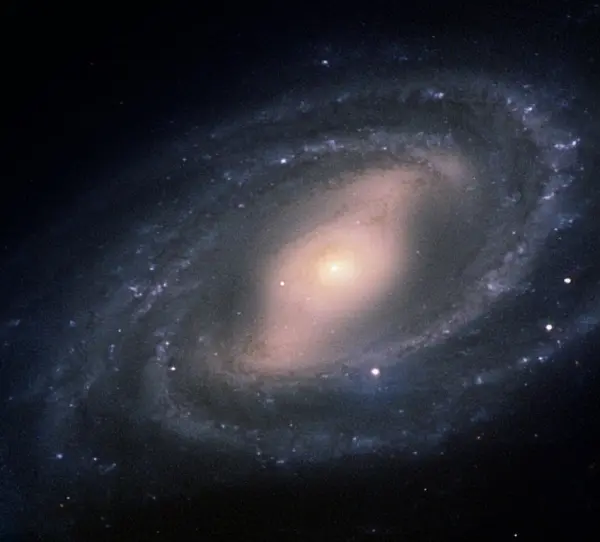
Messier 110: NGC 205
NGC 205 (M110) is a dwarf elliptical galaxy approximately 2.69 million light years away in the constellation Andromeda. The galaxy has an apparent magnitude of 8.92 and occupies an area of 21.9 by 11 arcminutes of the apparent sky. It is one of the satellite galaxies of the Andromeda Galaxy (M31). It can be seen in small telescopes, but it requires very clear, dark skies.
Right ascension: 00h 40m 22.0572349992s
Declination: +41° 41′ 07.507220136″
